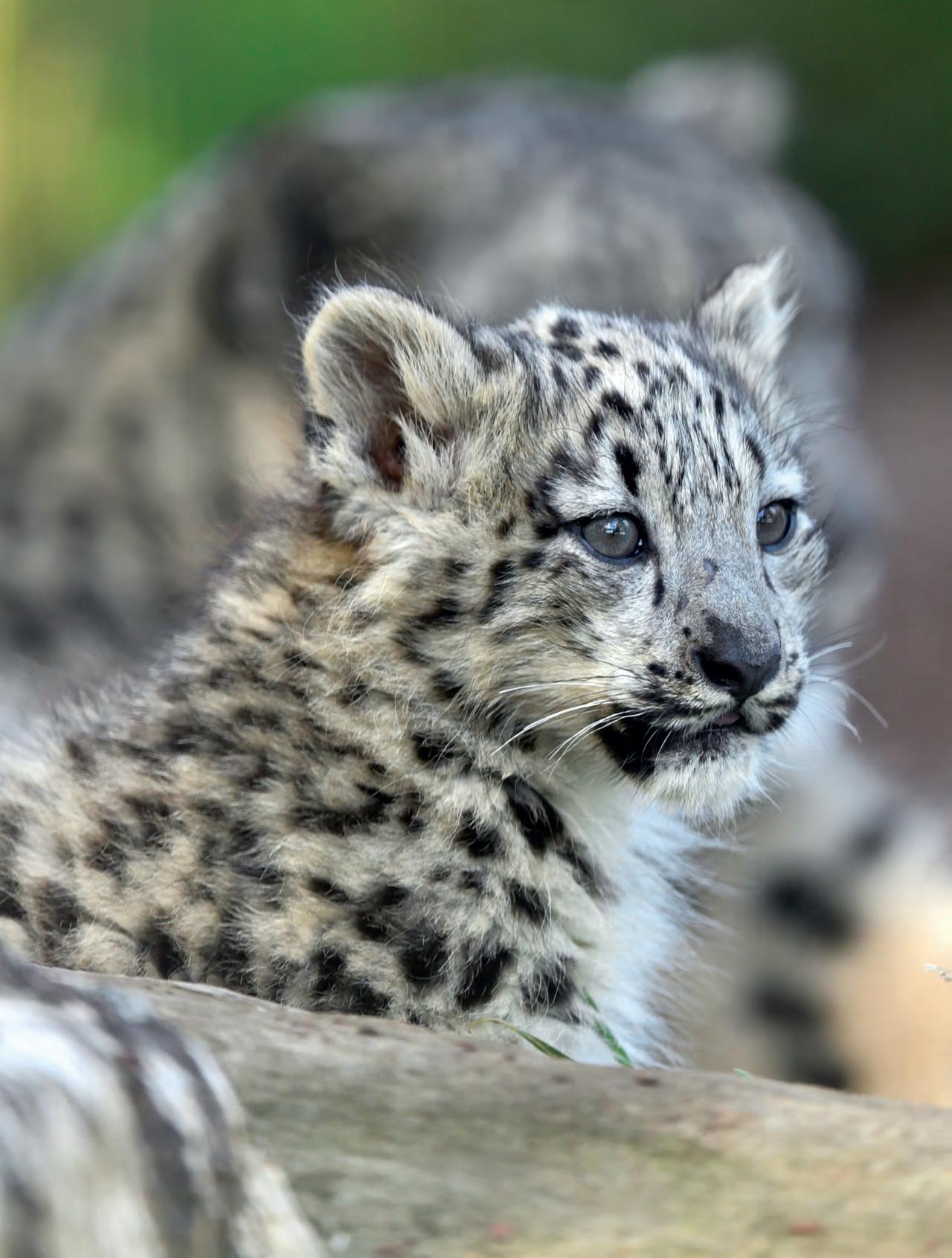

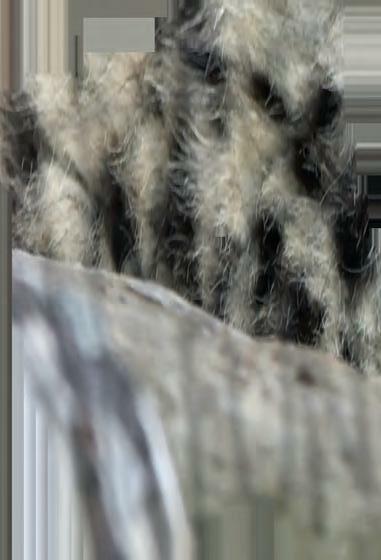





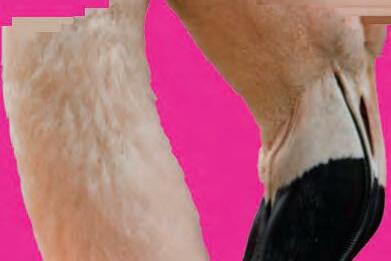
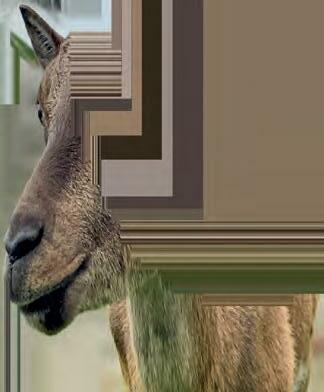

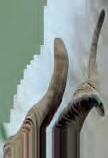
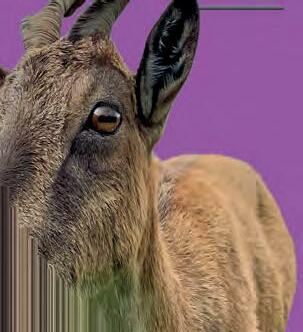


MEETOURSNOWLEOPARD CUBSAT HIGHLANDWILDLIFEPARK





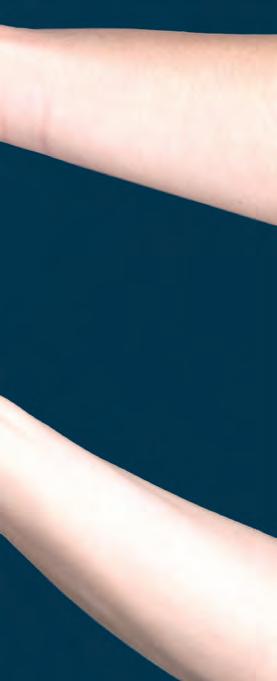












This is the official publication for members of the Royal Zoological Society of Scotland (RZSS). the wildlife conservation charity (Scottish registered charity SC004064).
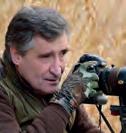
Your membership magazine and its envelope are made using paper from sustainably managed forests and are recyclable. For more information about RZSS,including details of our patrons. board and staff. visit rzss.org.uk
All content in this magazine is © RZSSunless stated otherwise.

For any editorial enquiries. please write to Membership, RZSS, 134 Corstorphine Road, Edinburgh EH12 6TS Or email us at: mem bersh ip@rzss.org.u k
RZSSEditorial
Team

Rebecca Milne. Laura Moore. Christine Moorhouse. Lisa Robshaw. Sarah Sia. Ben Supple. Hollie Watson
Editor Emily Radway


Contributing editors Claire Sargent. Laura Evans Art Director George Walker Managing Editor Andrew Littlefield Production Director Justin Masters Client Engagement Director Rachel Walder

Executive Director John Innes
Commercial Partnerships Director Sonal Mistry d: 020 3771 7247 e: sonaLmistry@thinkpublishing.co.uk
Published by T H I N K w: www.thinkpublishing.co.uk
As we were finishing this issue of your members' magazine, the Royal Zoological Society of Scotland. along with the rest of the country, was mourning the loss of Her Majesty The Queen. 1had the honour of attending the thanksgiving service for Her Majesty's life at St Giles· Cathedral in Edinburgh, and it was a moving and fitting tribute to a remarkable individual, someone who truly loved animals.
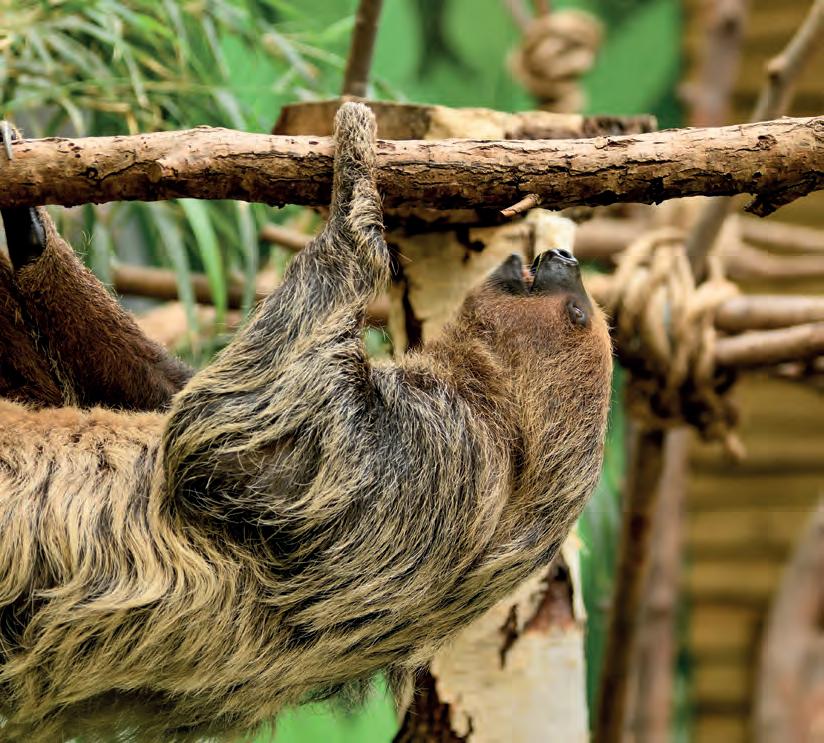
Our royal patron. the Princess Royal. has been steadfast at dealing with her personal grief alongside the nation's grief. and I welcome the fact that our new King is already an incredible environmentalist. We need people like him to ensure that nature is heard.
During the summer. it was wonderful to see so many of you enjoying the Giraffe About Town trail. as well as those
who joined us for the farewell weekend. The sight of all the giraffes lined up on the lawn was amazing. To those people who bid for a giraffe at auction or who were lucky enough to take one home -thank you.
Every season is special at Edinburgh Zoo and Highland Wildlife Park. but we have some extra-special events coming soon. including Spooktacular! at Edinburgh Zoo, which will be our final trail event of the year.
After that. Santa Claus will be paying us a visit in December. He insisted on coming back to see us because he had such a good time meeting you all last year!

Journalist Rich Rowe interviewed RZSS WildGenes programme manager Dr Alex Ball about conservation genetics in Cambodia.
Gardening writer and editor
visited Edinburgh Zoo to interview our gardeners about their award-winning work.
...J ...J L,,J
WILDLIFE CONSERVATION CHARITY
'rlZSS
THE
I CONTRIBUTORS u L,,J De :J ::5 w ;a;: Cl'. u.J 6 u
Aileen Scoular
(lJ
David Field, chief executive officer
RZSS.ORG.UK I WINTER 2022 3
Scottish natural history photographer Laurie Campbell went to Highland Wildlife Park to meet our new snow leopard cubs.
"RZSS

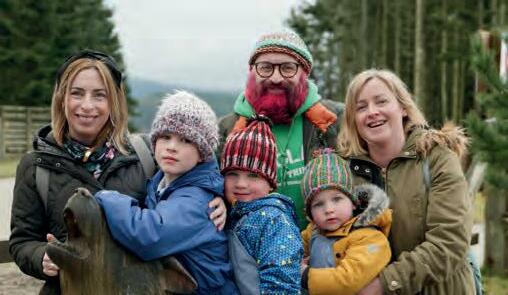











Snow leopard cub
Our snow leopards at Highland Wildlife Park had three cubs this year: Padme, Maya and Yashin. Read more about the cubs on page 18. Photography by Laurie Campbell.


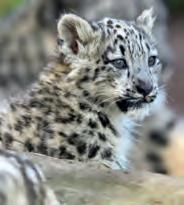
Your membership
THE WILDLIFE CONSERVATION CHARITY As a member you get unlimited visitsto EdinburghZoo and Highland Wildlife Park, plus... Free parking Members don't pay for parking at Edinburgh Zoo so don't forget to get your ticket validated 4 WINTER 2022 I RZSS.ORG.UK Special savings Enjoy an exclusive 10% member discount in our restaurants and gift shops Bring a friend ... or a few! You can get 25% off admission tickets for up to six guests you bring with you Seasonal specials Take the opportunity to book ahead for our events and enjoy discounted tickets


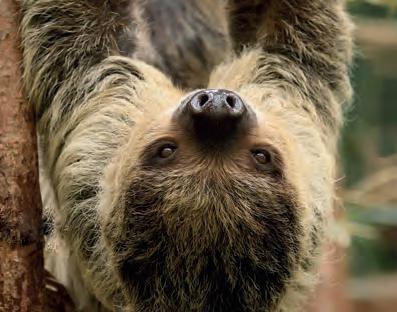
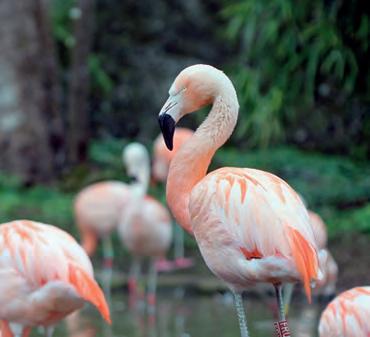
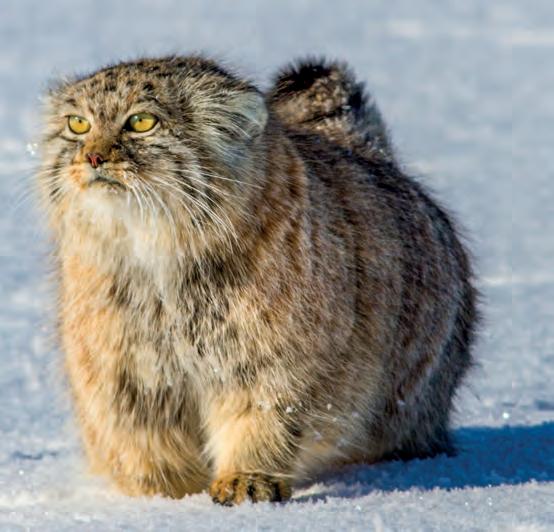
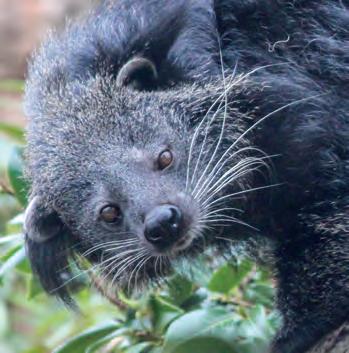

6 Now is the time Our charity's inspiring visie>nfor the future 8 The big picture European elk 10 Latest news from our parks 14 Conservation updates 16 Bear or not? The bears and not-quite-bears of Edinburgh Zoo and Highland Wildlife Park 18 Snow leopard cubs Highland Wildlife Park's adorable young trio 24 A day in the life of Lily the markhor 26 RZSS in Cambodia Helping elephants and Siamese crocodiles 30 Flamingos Seven facts about these pinkest of birds ... but they don't start out pink! 32 Planting out a home Our award-winning gardeners explain how they design green spaces for our animals 38 Great memories Head of living collections Darren McGarry on 36 years working at RZSS 41 Member guide Events, community projects and ways to support our work this season 44 Giraffe About Town Looking back on an amazing summer 46 In the shops Our favourite gifts to celebrate your love of animals this Christmas SO A moment I'll never forget Learning
CONTENTS RZSS.ORG.UK I WINTER 2022 5
technology officer Lizzie Seymour on feeding Edinburgh Zoo's rhinos
Solid foundations
"The Royal Zoological Society of Scotland is one of the most pioneering zoological establishments in the world. Thirty years ago, when zoos were starting to really focus on conservation, this organisation was one of those that set the standards. We continue to see that today in the work done by our teams, whether ifs in the welfare and advancement of care of our animals, the work of the RZSSWildGenes team, or the conservation breeding of an exquisite animal such as the wildcat. Now, in our new strategy, we are committing publicly to the change we're going to make -in Scotland and in the worldbetween now and 2030."
The new vision
"Our vision is A world where nature is protected, valued and loved. The word
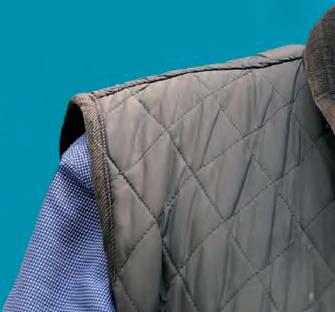
'love' is important. The reason why my colleagues and I do the jobs we do is because we adore animals and nature. I made that emotional connection when I first volunteered in a zoo in the West Midlands at the age of 12. It was a moment that changed my life, not just because it introduced me to the most amazing animals (Coco the chimpanzee is still my best friend!) but because I realised the importance of animals in people's lives.
"We're in a biodiversity crisis, and these are scary times both economically and ecologically. Nature has the answers, but we need to turn people back on to nature -and animals have the power to do that."
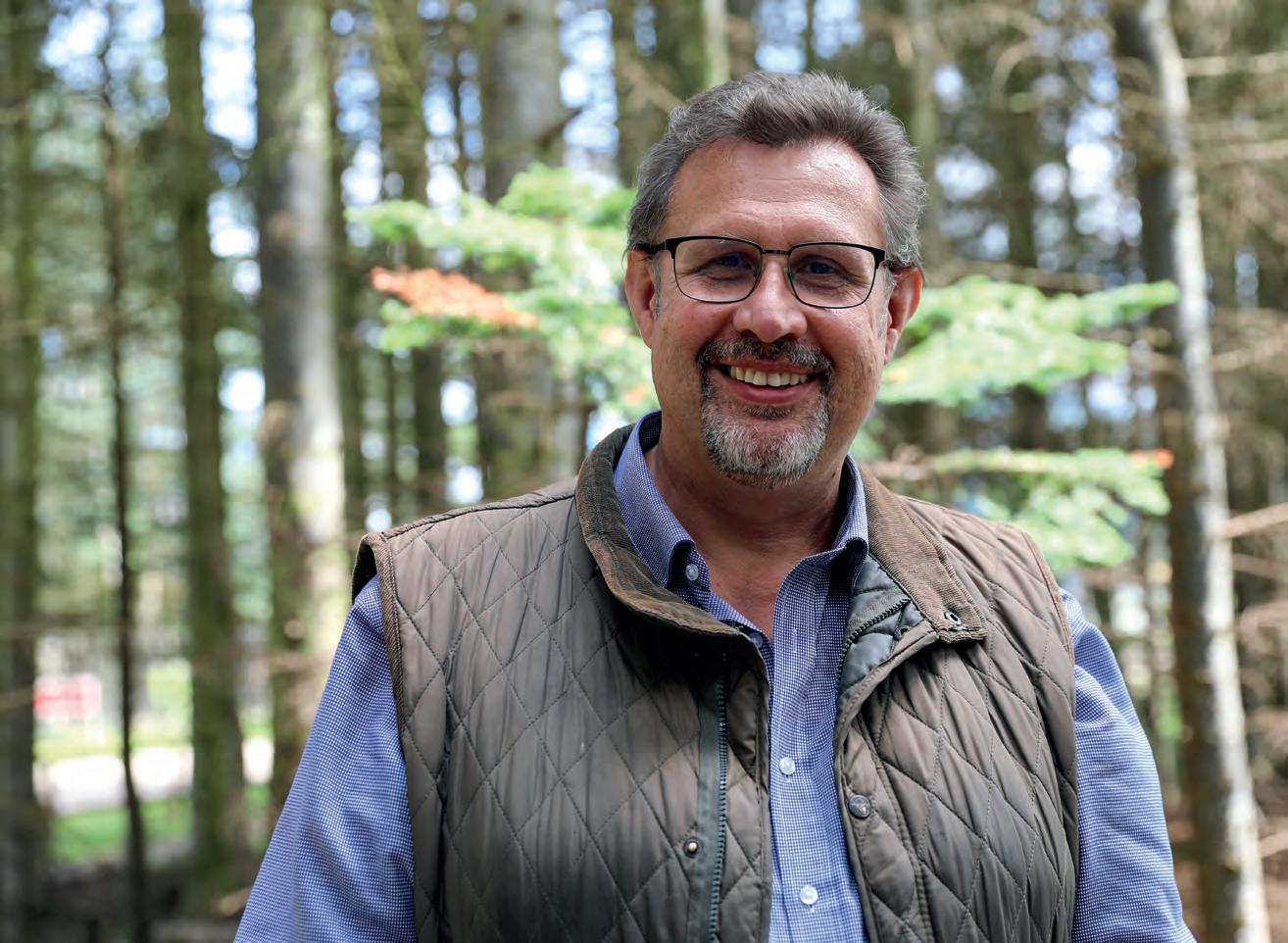
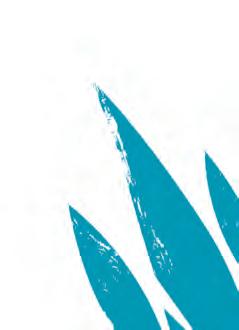
Pillars of our strategy

"We have three strong pillars within our strategy: community, engagement and conservation. The Royal Zoological Society of Scotland has a very serious purpose -to save animals -and the foundations of what we do are in zoology and veterinary science and education theory. But we also understand that we are the people's zoos, places where you can have incredible experiences that make the hairs stand up on the back of your neck.
"Community also means a huge amount. We have seen that during the pandemic -the social and cultural value of Edinburgh Zoo and Highland Wildlife , Park as safe spaces where grandparents
6 WINTER 2022 I RZSS.ORG.UK
could see grandchildren for the first time in months. It made me realise the hugely valuable role that we play in society."
Supporting our communities
"Equity of access to nature is a fundamental right, but many people have financial hardships or other issues that mean they don't get that access.

If we can do more to enable people to come into our zoos, then the power of the animals and our unique resources can help strengthen those individuals and communities. And if we can support people and make their communities stronger, then those people will have a greater capacity to engage with our conservation message.
'We're working with the children's hospital and primary schools, and we're offering access to the zoo to people that couldn't normally come, including Ukrainian refugees. It's the start of the journey of turning everybody into a conservationist."
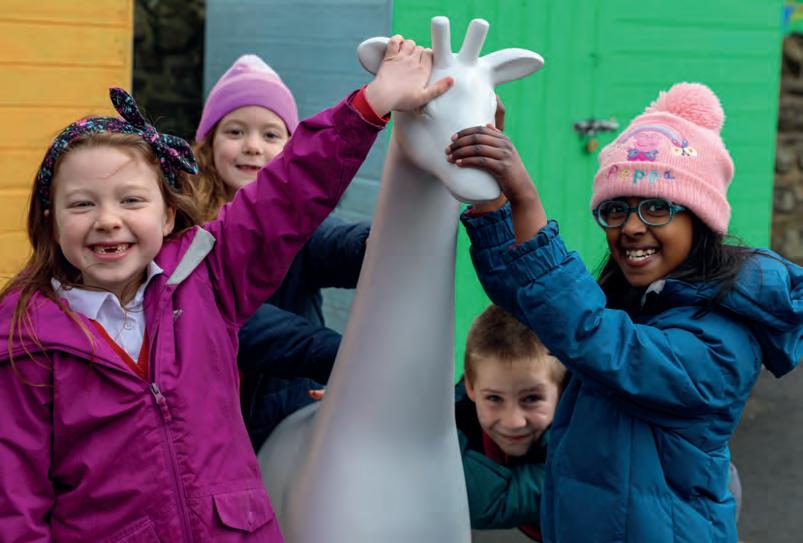
A wonderful day out
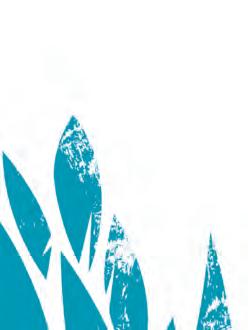
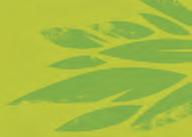
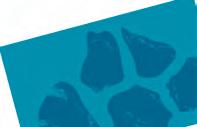
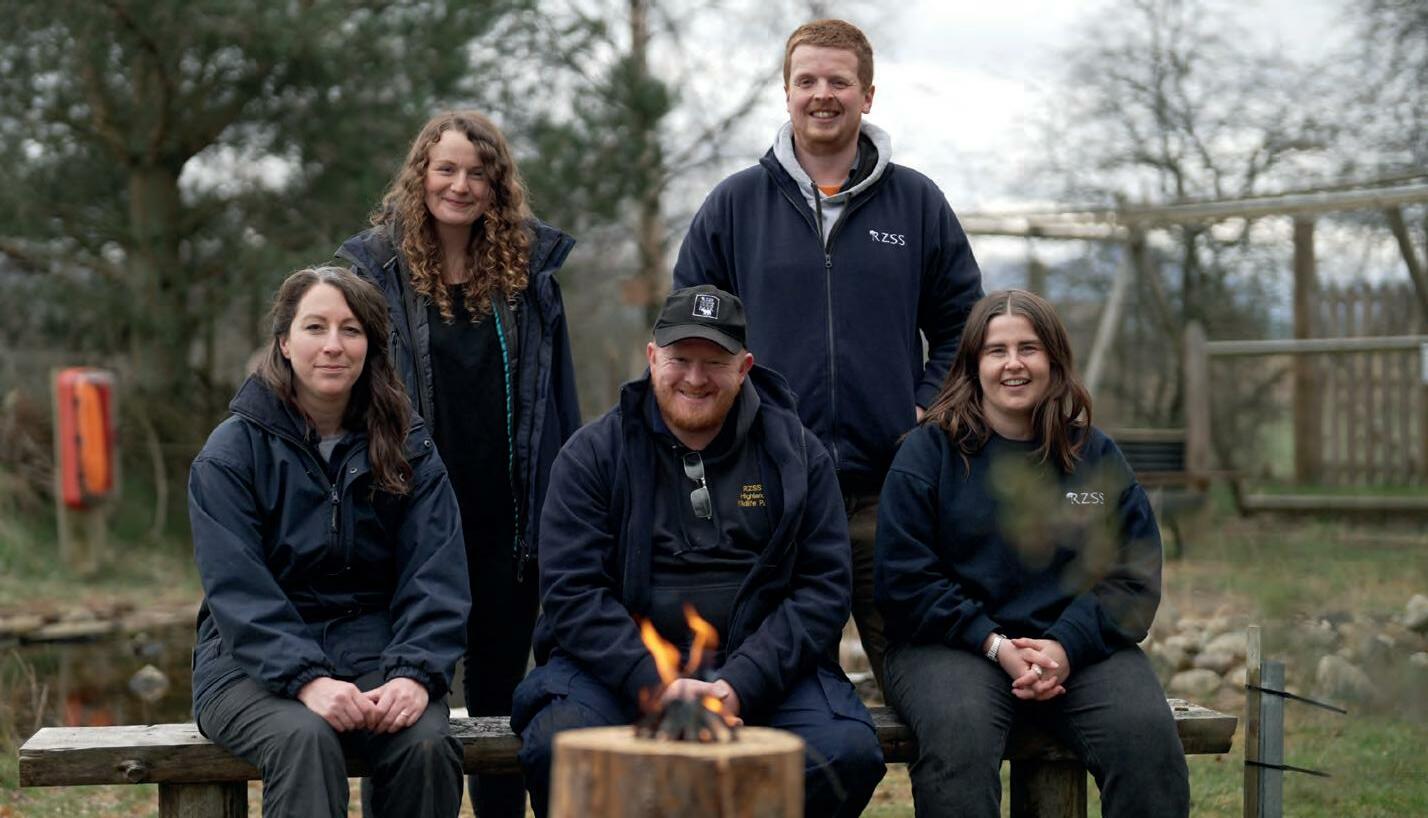

"In order to achieve our pledges, we've also got to make sure every visitor experience is the best it can possibly be -from the coffee and the toilets to the big animal experiences. If people's basic needs are not met, visitors are not going to be open to the incredible experiences that they can have here. We want people to be able to concentrate on the glories of nature, immerse themselves in the wonders of pandas and pine hoverflies, so that they can genuinely feel that full emotion towards those animals, and listen to our message.
"As more people get to learn -~ about more of what we're doing -in communities, via engagement and
with conservation -then they will want to come with us on our mission journey.
"This strategy will be evident on your walk around Edinburgh Zoo and Highland Wildlife Park. You will see our pledges publicly displayed. We're going to be shouting from the rooftops in terms of what we're trying to achieve. And we need help to do it."
The RZSSfamily
"Our members are part of the RZSSfamily. We do what we do because we have your support. We're only at the very start of the journey with our new strategy but I hope our members will be proud that we are publicly going out and announcing what we're going to do, and will support us in the work towards that mission. And I hope every other zoo in the UK follows
STRATEGY OUR PLEDGES By 2030, working in Scotland and across the world, RZSS will: ENGAGEMENT COMMUNITY Enable more than 100 communities to better protect nature RZSS.ORG.UK I WINTER2022 7
schools and community groups
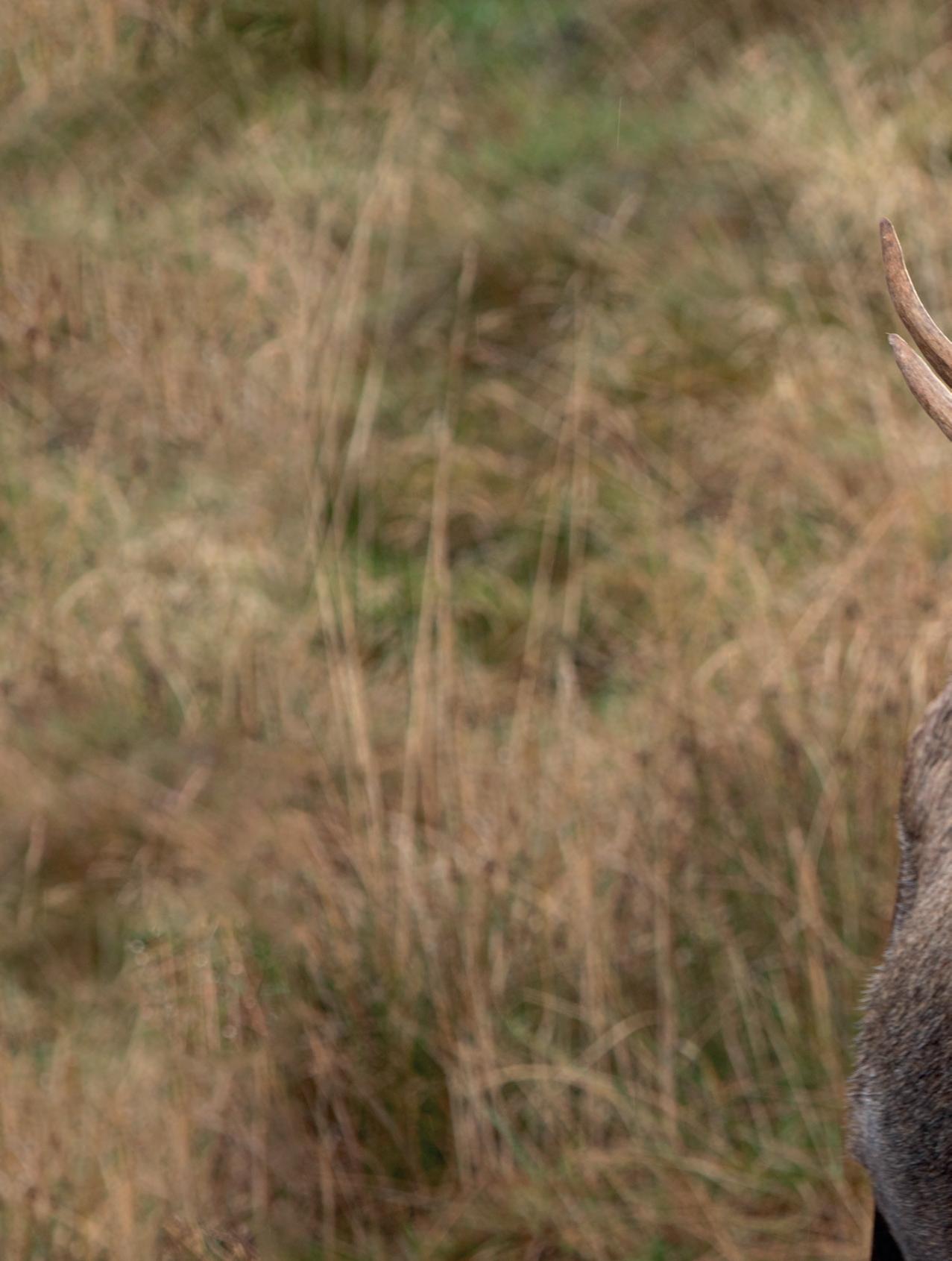
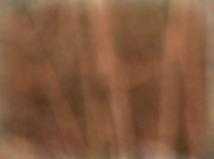
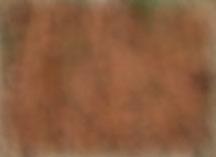


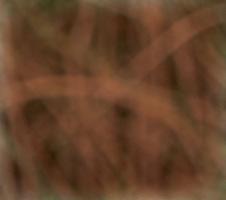
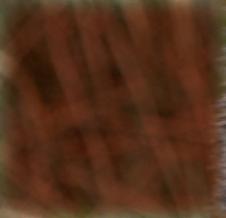



LOVE OUR EUROPEANELK? Adopt with RZSS
PROUD HOSTS
Edinburgh hosts conservation conference
The European Conservation Genetics Meeting (ConsGen22) was held in the UK for the first time this year, hosted by the Royal Zoological Society of Scotland, the University of Edinburgh and the Royal Botanic Garden Edinburgh (RBGE).
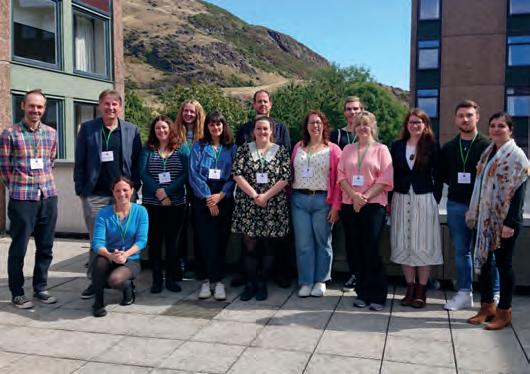
Guest speakers and global leaders in wildlife conservation and biodiversity came together over three days to share developments in conservation genetics from around Europe and beyond. Our researchers from the only zoo-based conservation genetics lab in the UK, RZSS WildGenes at Edinburgh Zoo, presented their recent work.
FISH AND CHIPS, ANYONE?
New restaurant serves up sustainably sourced food
A new restaurant has opened at Edinburgh Zoo, celebrating the first animal to be cared for by RZSS-the gannet.
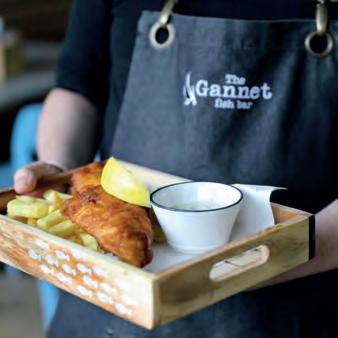

The Gannet restaurant occupies the space formerly known as the Jungle Cafe, offering a menu including fish and chips, vegan haggis and Cullen skink.
Ben Supple, director of engagement and business development at RZSS,said: "Sustainability is
at the heart of what we do, so ensuring that
values was incredibly important. From MSC-certified fish to Scottish potatoes and award-winning batter from Aberdeenshire, we want to present our visitors with some of the best that Scotland can offer."
The Gannet is open daily from 11.30am to 4pm. Don't forget to claim your members' discount!
Celebratory bamboo for Yang Guang
The giant pandas at Edinburgh Zoo both turned 19 years old this summer.
Keepers treated male panda Yang Guang to a decorated box full of bamboo, along with some carrots and honey.

Tian Tian goes through a less active period of her hormonal cycles at this time, meaning that she didn't have the appetite for celebrations, but there's no need to worry she's doing really well.
Yang Guang and Tian Tian arrived in Edinburgh in December 2011 as part of a 10year arrangement between our c arity and the China Wildlife Conservation Association since xtended for a further
-rr:z-
10 WINTER 2022 I RZSS.ORG.UK
Eve wanted to own your very use Wild Cards and nimal Antics own ortion of the zoo? Well, to get ahead of yo1:.1ropponents. now you can and from the The only statio s here are field comfort of yo r coffee table stations: RZSSconservation locations -with the new Monopoly dinburg~h____ a_r_ond t e world. You can even buy Zoo Edition. the deeds to Highland Wildlife Park.

























Forget Pall Mall and Old Kent Road: Pass Go to earn your salary -a this is much more fun. Choose your conservationist's gotta eat. Keep some favourite animals to adopt, from the cash aside for animal feed and habitat western grey kangaroo to the giant regeneration. Rub your hands in glee panda, via geckos, armadillos, tigers as your rivals struggle to keep up ... and more. Build the enclosures and and, of course, do everything you habitats they need to thrive. Instead can to avoid being sent directly to jail of Community Chest and Chance, (some things never change).

Monopoly Edinburgh Zoo Edition is available now at shop.rzss.org.uk and from the Edinburgh Zoo and Highland Wildlife Park gift shops, priced £39.50. Don't forget your 10% member discount!


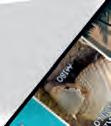


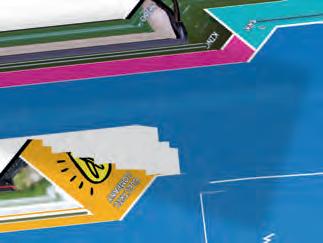

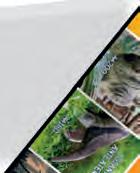


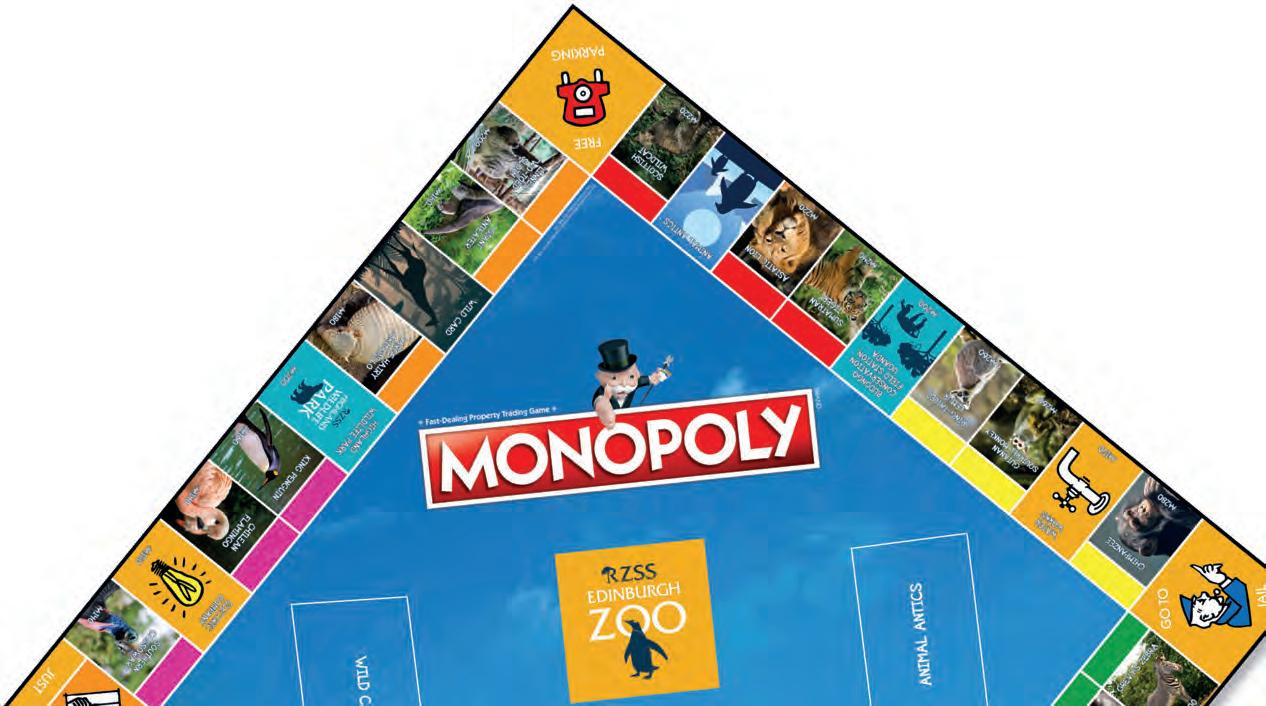

The wait is over -for the first time ever, the fast-dealing property trading game we all know and love comes to Edinburgh Zoo
GET OUT OF JAIL FREE.
WILDCARD
Enjoy the magical atmosphere of an evening visit to Rosslyn Chapel by candlelight this Christmas. Hear about the Chapel's history from one of our Guides then look round at leisure. The visitor centre and shop will also be open for some Christmas shopping opportunities.




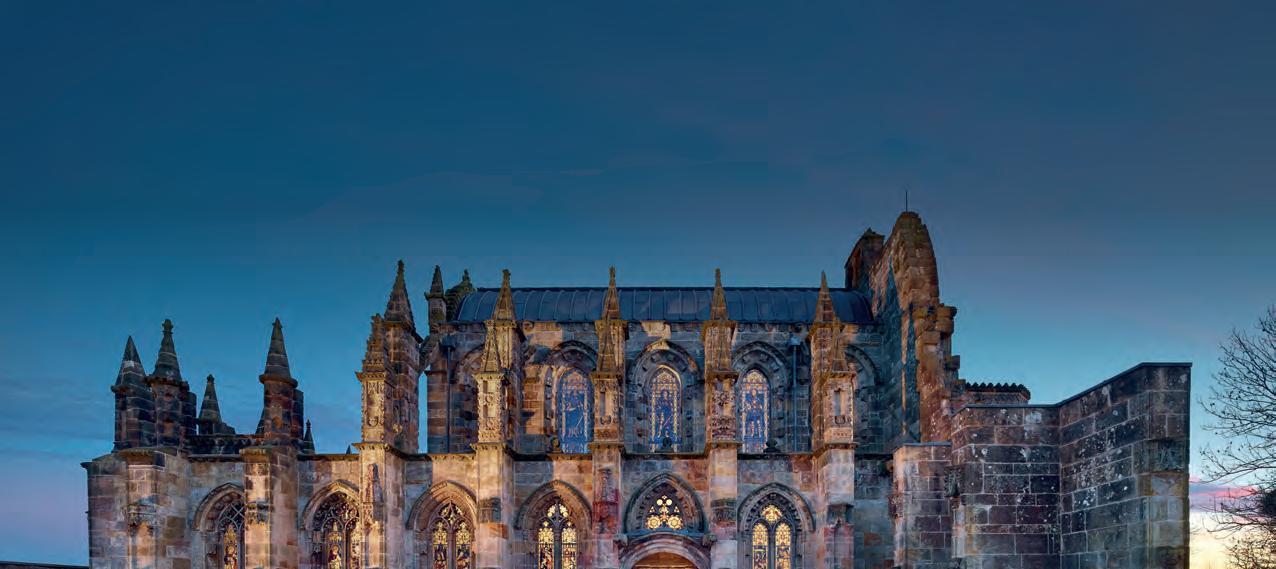
Membership of Historic Scotland does not qualify for a discount.
Numbers are restricted to just 30 people.
Please book in advance at www.rosslynchapel.com/ christmas
One of the female bison from the herd at Highland Wildlife Park has moved down to Kent to become matriarch of Britain's first herd of wild bison in thousands of years.

The Wilder Blean project, near Canterbury, is an experimental initiative that seeks to restore the natural biodiversity of an area of pine forest.
Similar projects in other parts of Europe have shown that bison can work as 'ecoystem engineers' and that their natural behaviours can enable other animals to thrive.
Our bison, Glen Isla, was released alongside two young females from Fota Wildlife Park in Cork. A young bull from Germany is due to join them later this year.
22 WILDCAT KITTENS!


They could be among the first of their species to be released into the wild
The Saving Wildcats conservation partnership project is celebrating a successful first breeding season, welcoming a total of 22 wildcat kittens.
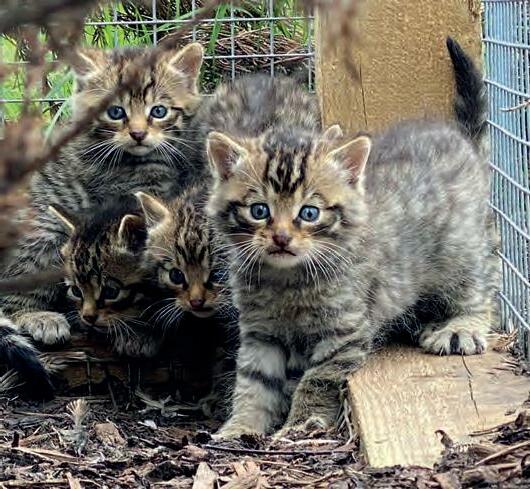
Led by RZSS,Saving Wildcats is working with national and international experts to restore Scotland's critically endangered wildcat population by breeding and releasing them into carefully selected locations in the Cairngorms National Park.
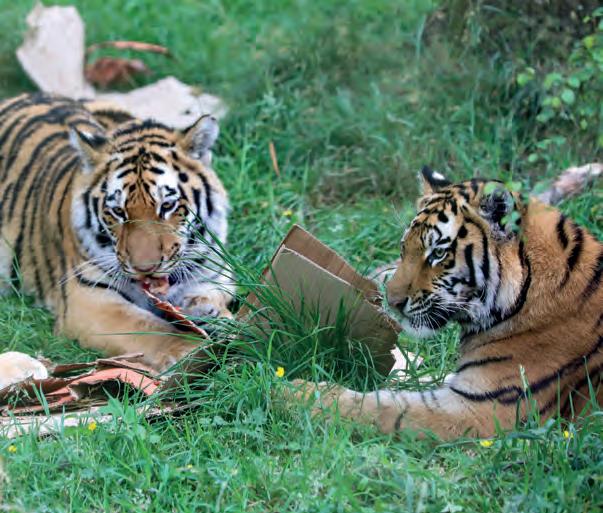
Saving Wildcats conservation manager David Barclay said: ·our target for the first breeding season was 20 kittens, so to have 22 in just six litters is a huge success which gives us a great base for the next phase of the project.
"While human presence is kept to a minimum to give these cats the best possible chance of survival after release, our small team of expert keepers are able to monitor the kittens and their parents on remote cameras. It has been fantastic to watch them grow and develop over the summer.
"Once the kittens are fully independent and no longer reliant on their mums, they will move into special pre-release enclosures which are designed to help prepare them for the many challenges of life in the wild."
Highland Wildlife Park bison joins Wilder Blean herd
RZSS.ORG.UKI WINTER2022 13
PINE HOVERFLY CAIRNGO RMS






For the first time in almost a decade, an adult pine hoverfly has been spotted in the wild in Britain. This is a direct result of the RZSSconservation breeding programme for the species, which forms part of our work within the Rare Invertebrates in the Cairngorms project. The sighting follows releases of larvae, bred at Highland Wildlife Park, in October 2021 and March 2022, and the hope is that enough of thP insPcts have survived to adulthood to mate and, ultimately, establish new wild populations.
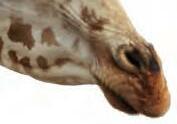



In September we were joined by Stephanie and Julian Fennessy for a talk on how their Giraffe Conservation Foundation (GCF) is working to protect these gentle giants. As well as raising awareness and funds to halt the silent extinction of giraffes in the wild, the RZSS WildGenes team, with support from Glenmorangie, is helping GCF monitor their giraffe reintroduction programmes across Uganda.

14 WINTER 2022 I RZSS.ORG.UK
3i
SMALL SCABIOUS MINING BEE
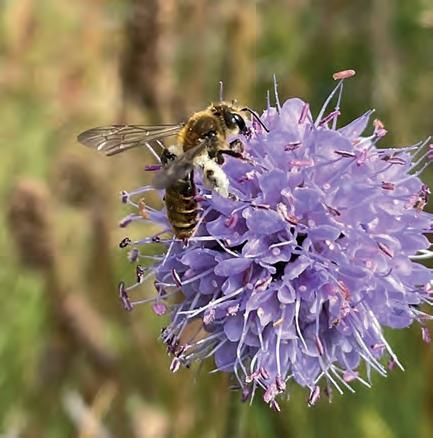

HIGHLAND WILDLIFE PARK
These rare pollinators get their name from the plant that the females visit to gather pollen for their nests. As part of our onsite biodiversity work, we conducted a survey to estimate the small scabious mining bee's population size at Highland Wildlife Park. Over the past year, we've also planted around 200 devil's bit scabious plants to encourage the park's bees to venture further around the site.



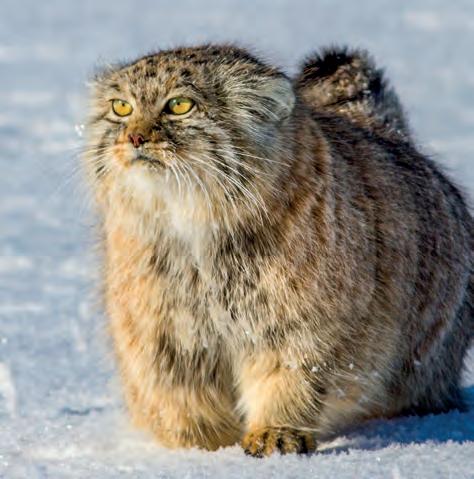
PALLAS'S CAT
MONGOLIA
As part of Pallas's cat International Conservation Alliance (PICA) we're working to proactively protect this wild cat, a smaller cousin of the snow leopard. PICA operates not just in Mongolia but in parts of China, Kazakhstan, Iran and Afghanistan, developing identification and monitoring guidance, supporting threat removal projects, and raising awareness of this charismatic but neglected species.
SIAMESE CROCODILE
CAMBODIA
Turn to page 26 to read about how the RZSSWildGenes team is helping to identify critically endangered Siamese crocodiles, in order to help secure the species' future in the wild.
RZSS.ORG.UK I WINTER 2022 15
These excellent tree climbers live in the dense tropical forests of Asia. You'll find our duo of sun bears, Babu and Ratana, at Edinburgh Zoo.
Sun bears are the smallest member of the bear family (Ursidae), reaching a shoulder height of around 70cm.




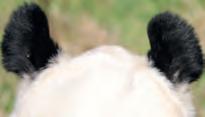

Our trio of Queensland koalas at Edinburgh Zoo conserve energy by snoozing for up to 22 hours a day!
Though sometimes referred to as koala bears, these eucalyptus munchers are actually members of the marsupial family, along with kangaroos and wombats.


Polar bears have black skin under their white fur to help absorb heat. Spot our four polar bears at Highland Wildlife Park.
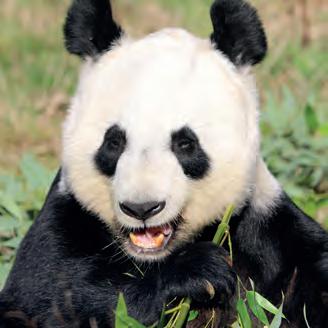
The biggest species of bear on the planet. polar bears share their ancestry with brown bears, but have evolved to thrive in the Arctic.
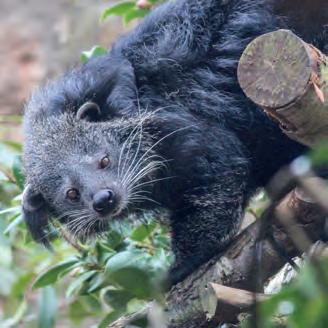
You'll find two of these furry-faced rainforest dwellers at Edinburgh Zoo -our male Ali and female Poppy. Although sometimes known as bearcats, binturongs aren't related to either bears or cats! They belong to a group of long-tailed carnivores called viverrids, as do civets and genets.
Edinburgh Zoo is home to the UK's only giant pandas, Yang Guang and Tian Tian. As with their wild cousins in China, their diet is 99% bamboo!
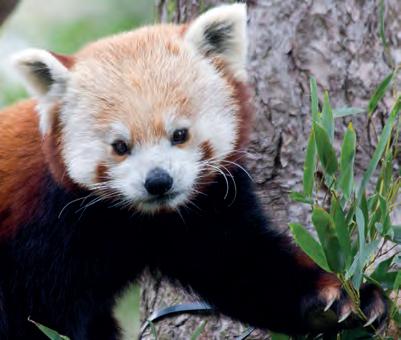
The panda's place in the tree of life has long been debated, but today it is considered a true member of the bear family.
Red pandas, including the ones at Edinburgh Zoo, are native to the mountain forests of the Himalayas and southern China.
Although red pandas share a name with the giant panda, they're closer to raccoons and skunks than bears. They're the only living species in their very own family (Ailuridae).

BEARNECESSITIES
16 WINTER 2022 I RZSS.ORG.UK
His cookbook, Toe Hebridean Baker: Recipes and Wee Stories from the Scottish Islands, features lots of traditional bakes and classics with a Scottish twist.
















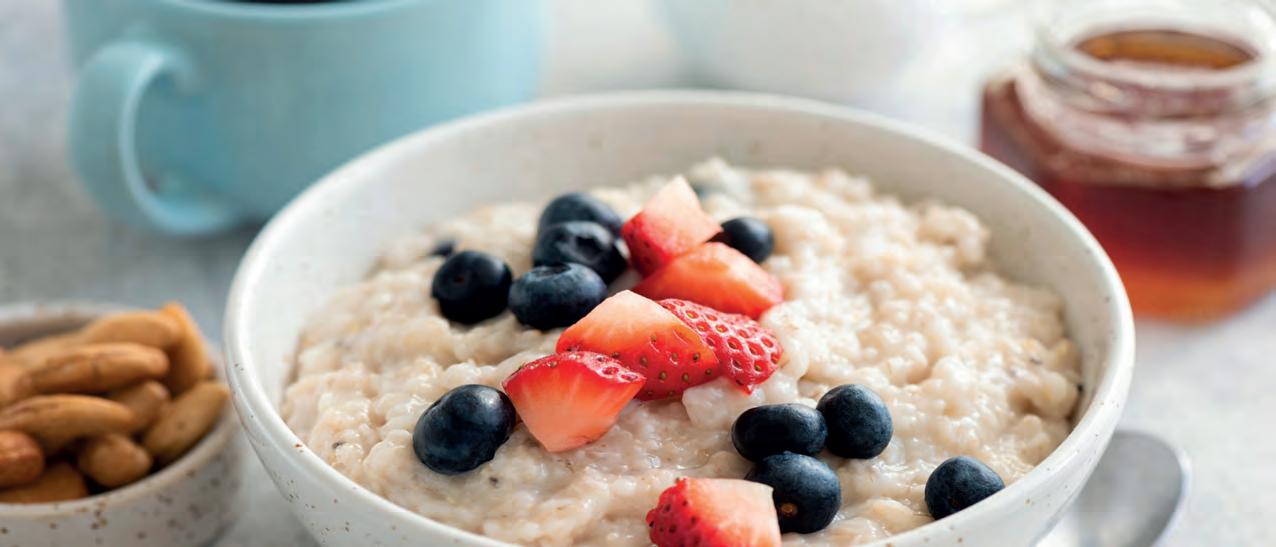







Check out a selection of Hebridean Baker recipes on our website. hamlynsoats.co.uk
 Toe Hebridean Baker is Coinneach Macleod, born and raised on the Isle of Lewis.
Toe Hebridean Baker is Coinneach Macleod, born and raised on the Isle of Lewis.
Visit our website and discover inspirational recipes using Hamlyns Scottish Porridge Oats and Oatmeals www.hamlynsoats.co. uk
hree new furry faces have been winning visitors' hearts at Highland Wildlife Park this yearthe park's latest litter of snow leopard cubs, Maya, Padme and Yashin. The two females and one male were born to experienced mum Animesh and first-time dad Koshi in May, much to the delight of their keepers.
"Snow leopard births are a very exciting time at the park," says keeper Robbie Rankin."Wewere watching Animesh closely towards the end of her pregnancy. With female snow leopards, it's hard to even tell they're expecting cubs at first -the two inches of thick

fur on their bellies hides it well! But at the very end of their pregnancy, their teats become enlarged as they get ready to suckle their young. Animesh kept us waiting for a little while, but at last we heard high-pitched calls from the cubbing den and knew she'd given birth."
As with other cats, a female snow leopard instinctively retreats somewhere safe and secluded to nurse her cubs. This initially kept keepers guessing about the size of the new litter. "Atfirst, we couldn't make out how many babies were nestled against mum in the darkness of her den -they were just a bundle of fur! Eventually, however, we counted three tiny cubs," says Robbie. 0
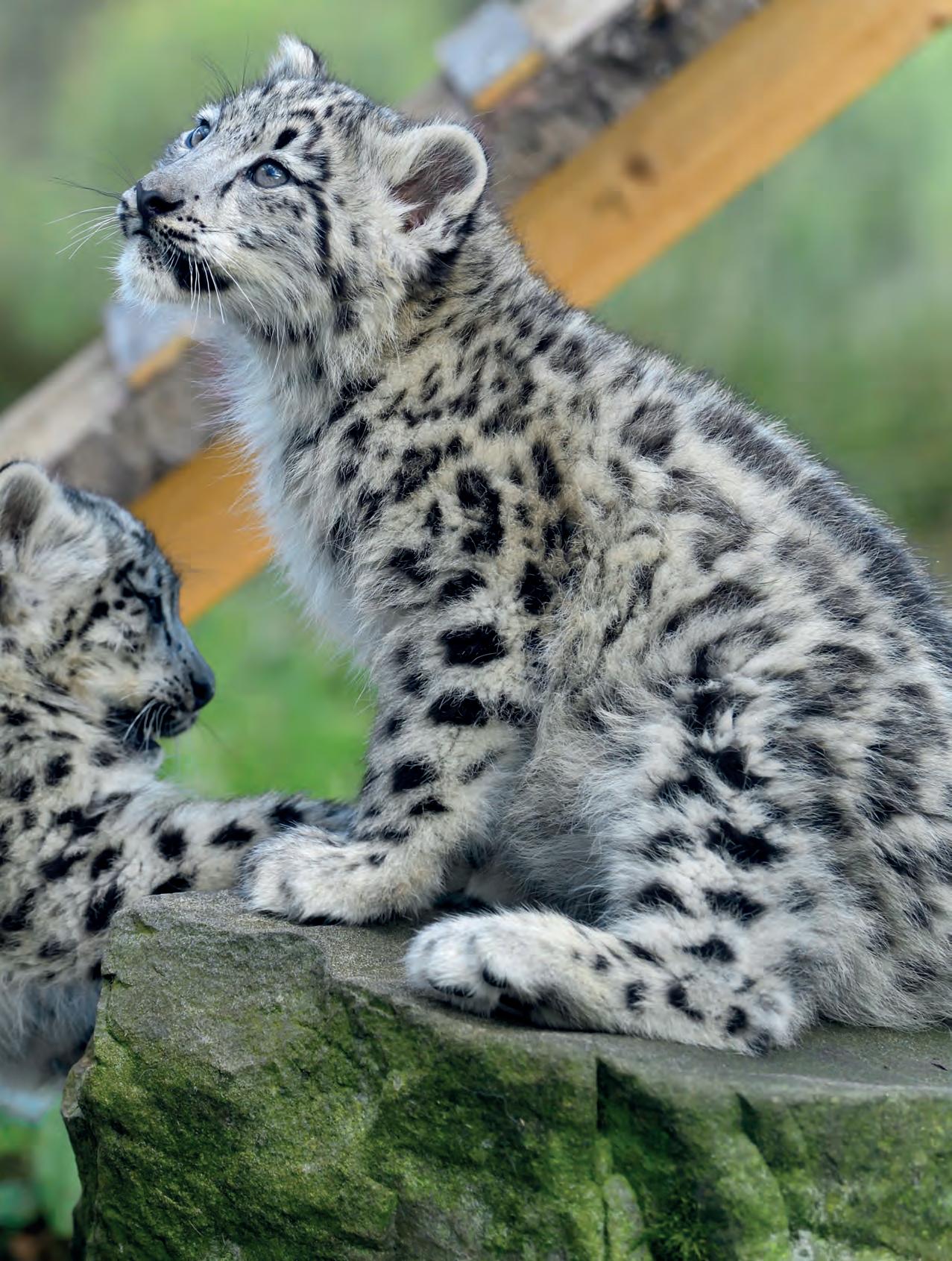

The growing cubs
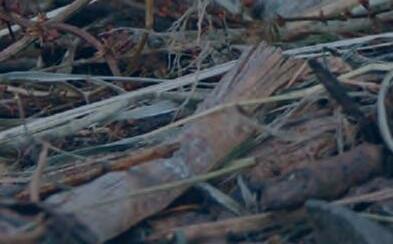
Newborn snow leopards don't open their eyes until they're around a week old, and remain entirely dependent on their mother's milk for the first couple of months -but they soon start to venture further from her side.
"The cubs quickly started exploring, playing together, chasing one another and jumping onto ledges, just like pet kittens," says Robbie. "Snow leopards have one of the longest tails of any big cat and the cubs will often chase each other's tails -or their mum's!"

All cats have different personalities, j and snow leopards are no exception. "There's often a bolder youngster who :;: 25 leads the way, and perhaps a smaller animal who's less assertive, and we're ::J ::i already seeing this in the cubs," says
Robbie. "Our smaller female tends to stick more closely to her mum." Attentive mother Animesh joined the park in 2015 and has already successfully raised two female cubs fathered by her previous partner, Chan.
"Animesh is a very laid-back animal, but like any big cat mother she's very protective of her cubs," says Robbie. "She's usually very relaxed and friendly towards the keepers, and will come and rub up against the bars to say hello. But now that the cubs are around, she'll growl at us occasionally, to warn us to keep our distance, which isn't like her at all!"
To carry out the first health checks on the cubs under the nose of their watchful mum, the veterinary and keeper teams had to work fast.
"We encouraged Animesh into the other side of her enclosure and separated her from the cubs, keeping her distracted with food. Meanwhile our vet team were waiting -suited, booted and gloved in protective gearto go in and scoop up the cubs."
20 WINTER 2022 I RZSS.ORG.UK
11Animesh is a laid-back animal, but like any big cat mother she 1s very protective of her cubs
11
Keeper Robbie Rankin
Each infant was weighed and had blood and hair samples taken, before being returned to the enclosure as quickly as possible to minimise the stress for both mother and cubs. The vet team were delighted to find all three cubs in good health, and to confirm that there were two females and one male in the litter, who were then named (see right).
Learning life skills
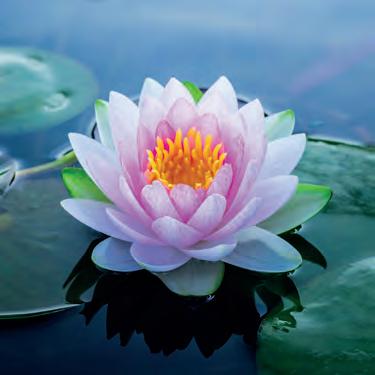
In the wild, cubs tend to stay with their mother for nearly two years, sharing her kills and learning her survival skills. "Snow leopard cubs can be pretty cheeky about stealing scraps of their mum's food," smiles Robbie. Adult male snow leopards, on the other hand, are generally solitary animals -and 0
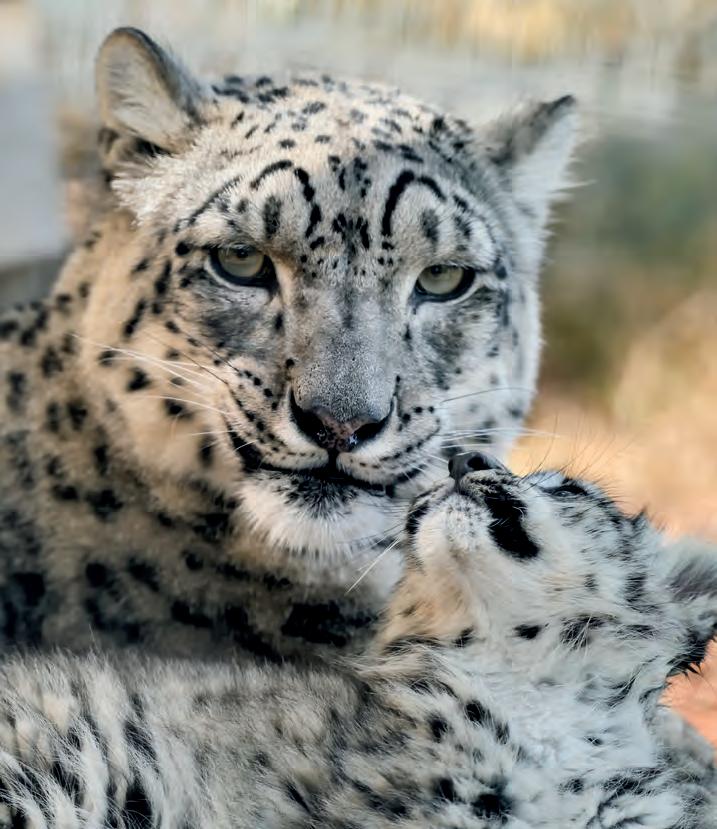

certainly not hands-on dads!
"Males don't get involved in rearing cubs. and they may kill litters fathered by other males -but they recognise their own offspring by their scent," says Robbie.

New father Koshi was given his own area of the enclosure while Animesh reared her newborns, but he has gradually been introduced to his cubs through a series of short visits.

"Their first meeting went really well," reports Robbie. "Although when one of the cubs gave a wee hiss, Koshi jumped

22 WINTER 2022 I RZSS.ORG.UK
a mile in the air, which made us all laugh! At three, he's a relatively young dad; our previous male didn't have cubs until the age of five. But Koshi and Animesh have been getting on very well since he joined the park in 2020."
Keepers hope that if the new family continue to get along, they will be able to share their habitat. The enclosure is purpose-built around a rocky hillside that provides ideal terrain for snow leopards, with plenty of the high vantage points they love.
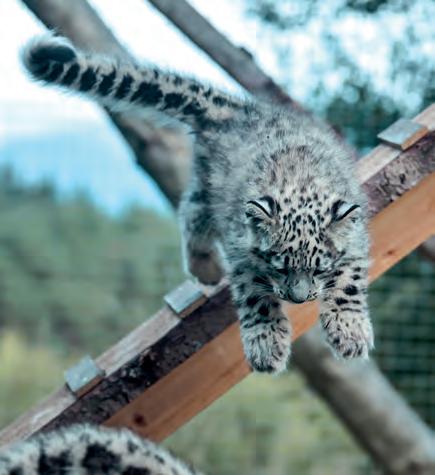

And as the young cubs explore further, this season's weather is unlikely to put them off. "Snow leopards are perfectly adapted to thrive in icy, mountainous habitats -from the thick fur between their toes to their enlarged nasal passages, which warm the cold air they breathe in," says Robbie.
Once the cubs eat more solid food, their keepers will be able to carry out basic training with them, using morsels of meat as a reward. Robbie notes, "It's much easier to carry out things like health checks if our animals are trained to come over and cooperate with us."
With an estimated 2,700-3,400 snow leopards thought to remain in the wild, every new birth is good news for the species. "Our snow leopards are part of the European breeding programme to safeguard these amazing animals," says Robbie. "Although it's always sad to say goodbye to them, we hope that one day the cubs will move on to other collections to start their own families -just as in the wild, they would eventually leave their mothers and move into their own ranges."
Our magnificent snow leopard family are also winning hearts and minds for wildlife. "We get many people coming to the park just to see the snow leopards, and every visit helps raise awareness of these animals and the threats they face," says Robbie. "They are one of my favourite species at the park. They're such rare and beautiful animals, and so little seen either in zoos or the wild, that it's a privilege to work with them."
11 We hope that one day the cubs will move on to other collections to start their own families - just as in the wild, they would eventually leave their mothers and move into their own ranges 11
Keeper Robbie Rankin
RZSS.ORG.UK I WINTER 2022 23
A DAY IN THE LIFEOF...
Ask hoofstock keeper Debbie Barclay who the most laidback of the Highland Wildlife Park's 15-strong herd of Turkmenian markhor is, and it's likely Lily will always be top of her list.
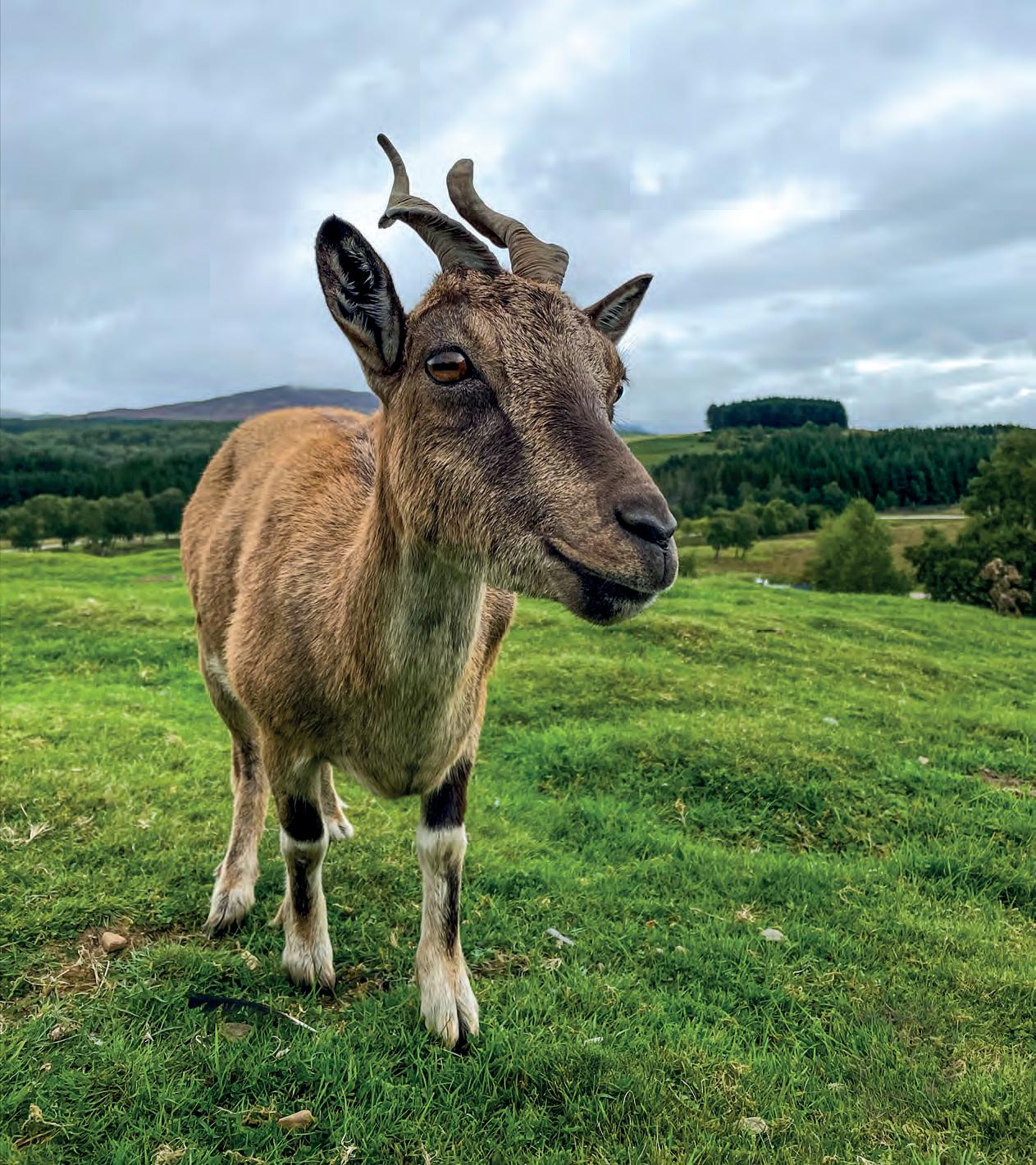
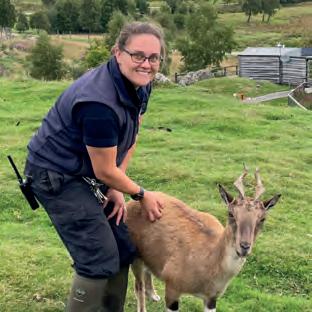
Born in the park to mum Jala on 25th May 2017,Lily's cool, calm and collected demeanour sets her apart from her more rambunctious markhor companions, who are all named after plants, trees or vegetation.
"Lily is a lovely markhor. She's quite chilled, gentle, and doesn't headbutt you like some of the others," laughs Debbie. "Because she's so trusting, we can really get hands-on with her when it comes to health check-upsthough I do remember her giving us a run for our money during an injection. Lily may be relaxed 99% of the time but she's got plenty of energy when she feels like it!"
Lily puts the same energy into caring for her daughter, Blossom, who was born at the park in May 2020. "Lily's a great mum and lets Blossom do her thing," Debbie says."And because Lily's so trusting of us, it gives Blossom more confidence to be around us too. It's great working with animals like Lily that let you give them a friendly scratch and check they're stress-free."
And it seems the apple doesn't fall far from the tree when it comes to being placid. "Lily and Blossom are both really chilled out togetheralthough Blossom can get a little too overexcited and steal her mum's food or
favourite sleeping spots," says Debbie. "Sometimes Lily has to put Blossom in her place and remind her who's boss."
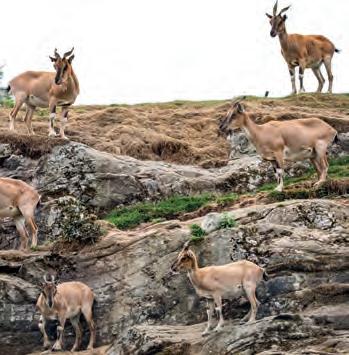
Food pilfering and favourite snoozing spot stealing aside, Debbie and Lily have a special mother-daughter connection.
"The thing that I love about markhor is that they show they care for each other by practically sitting on top of or right next to one another," says Debbie. "Lily and Blossom have such a deep bond and it's great to see them being such close companions."
Turkmenian markhor are native to the mountains of the Hindu Kush, but there are estimated to be fewer than 2,500 remaining in the wild. The Highland Wildlife Park's markhor can be seen in two places in the walkround area: males can be spotted on the way to Wolf Wood, while the females and their kids can be seen on the path up to the polar bear viewing platform.
7.30am
It's breakfast time for Lily and the other 12 markhor in the enclosure. When the keepers enter, the markhor run towards them but Lily tends to get pushed aside, so she looks to the keepers for a handful of pellets if she doesn't get enough from the troughs.
9.15am
The keepers make sure everyone is happy before cleaning the enclosure. The markhor hang about while it's being done, and Lily usually comes over for a nosy -she loves a good scratch between the horns as markhor are always itchy here.
11.30am
Sometimes we put the markhor in the bottom section of the snow leopard enclosure after moving the leopards into the top area. Lily and the rest of the markhor browse and graze, poo and pee. This relocation provides enrichment for the markhor, as they get to explore steeper cliffs and smell predators, but also for the snow leopards, who can smell the markhor scent afterwards.
1.30pm
Lily and Blossom usually have a quick snooze in the afternoon. You'll often see them sunning themselves on the cliffs or in their beds if it's cold.
3pm
Markhor can have overgrown hooves, so we train them to let us give them pedicures. Lily and Blossom are trained together. Lily is so good and lets us lift her feet. This helps Blossom get used to us too.
6pmonwards
Markhor are full of energy, so Lily and Blossom are likely active on and off through the night, enjoying the best views of the park from their penthouse of an enclosure!
Learn all about the Highland Wildlife Park's coolest Turkmenian markhor and her close relationship with her daughter, Blossom
24 WINTER 2022 I RZSS.ORG.UK

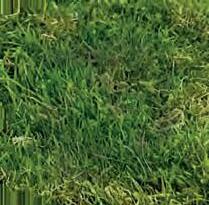



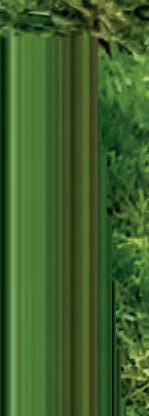


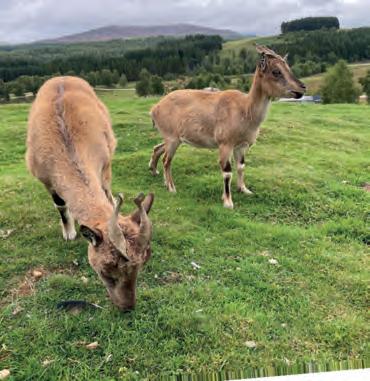
GOATS RZSS.ORG.UK I WINTER 2022 25
hen Dr Alex Ball returned from a four-week visit to Cambodia this summer, he could afford a smile of satisfaction -and perhaps even a sigh of relief. Having seen the development of the country's first ever conservation genetics laboratory stalled by the pandemic, his trip confirmed that the fledgling facility is now going from strength to strength -and already making a difference for some of Cambodia's most vulnerable species.
Back in Scotland, Alex is programme manager for RZSSWildGenes, the only zoo-based conservation genetics laboratory of its kind in the UK.This high-tech facility, tucked away behind the rhino house at Edinburgh Zoo, contributes its expertise to a wide range of conservation projects both at home and around the globe.
On a weekly basis, the WildGenes team receive animal samples -tissue, bone, blood, hair and dung -from field researchers and other zoological institutions from which they extract and analyse DNA,the genetic code for all life.
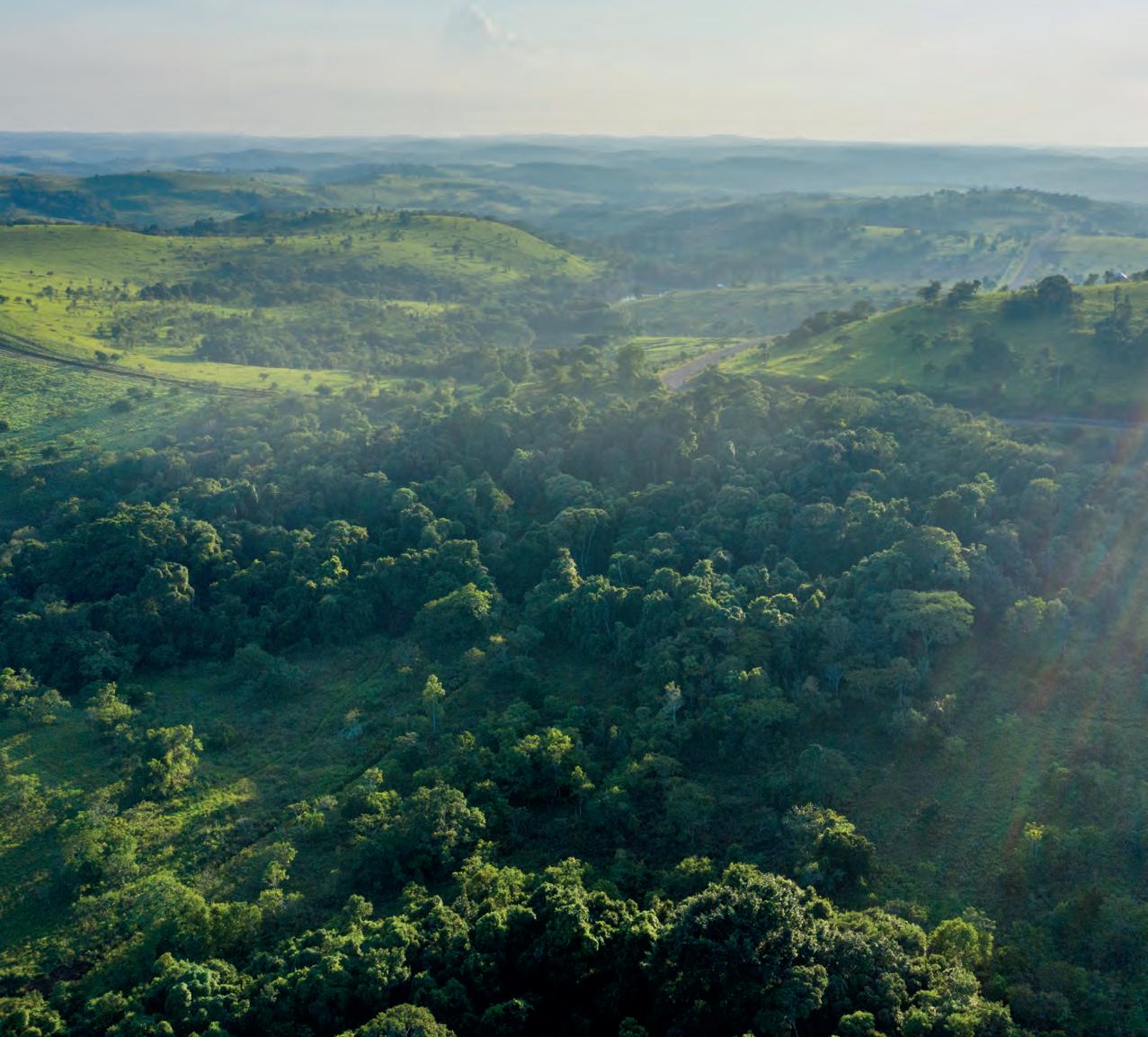
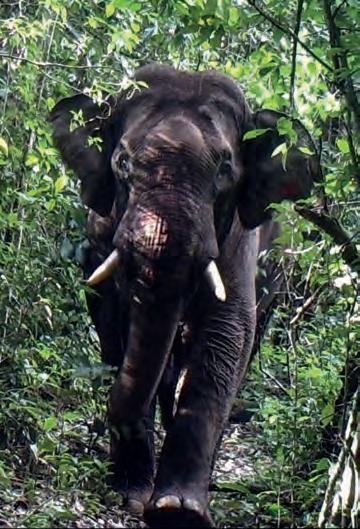
26 WINTER 2022 I RZSS.ORG.UK
The data produced from the DNA helps to answer key questions that inform a wide range of important work, from in-situ monitoring of wild populations of animals and captive management programmes, to reintroduction projects and combatting the illegal wildlife trade.
But WildGenes is much more than just a lab; it also shares knowledge, helping to build capacity and expertise in countries that need it for their own priority conservation work.
"We are in a unique position in that we sit somewhere between
academia and conservation applications on the ground," explains Alex."Our aim is to bridge that gap, bringing tools and techniques that are developed in research institutions like ours and using them for applications that make a difference in real world conservation."
Building blocks
And that's exactly what is happening in Cambodia -a country with a rich biodiversity but relatively limited educational opportunities. Since 2016, the WildGenes team have worked closely with the Royal University of Phnom Penh, training university staff in genetic laboratory work and data analysis.

"Our aim for the Cambodia lab is to have a self-sustaining facility with
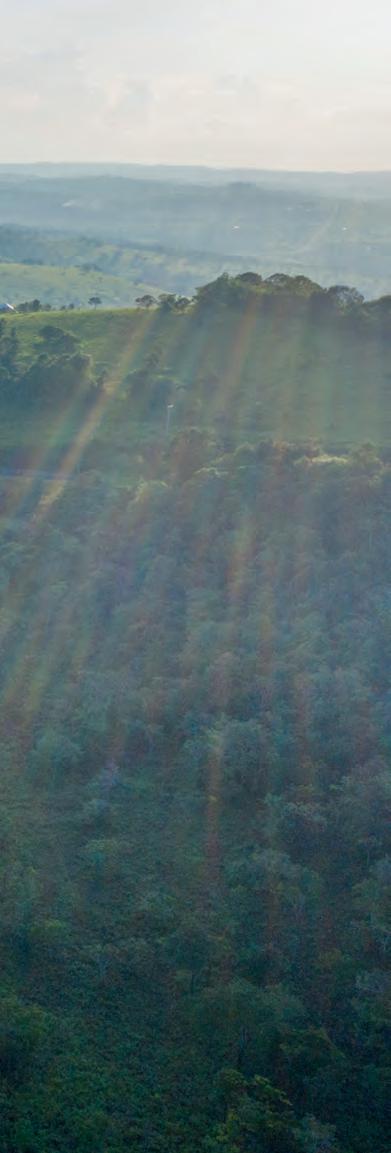
the expertise to tackle in-country conservation priorities for themselves," outlines Alex.
At the same time as equipping staff with key tools and techniques, the ambition is to also produce genetic data that feeds into existing conservation efforts -a hands-on training that benefits both the lab and the projects on which it works.
Alongside Fauna and Flora International, the World Wide Fund for Nature and the WildlifeConservation Society, the WildGenes team began by focusing on establishing estimates for numbers of wild Asian elephants in three protected areas in Cambodia.
Elephants once ranged over much of south-east Asia,but the loss of their favoured jungle habitat has seen numbers plummet, with overall population estimates of somewhere between 200 and 700 individual animals left in Cambodia. As the largest land mammal in Asia, it might be reasonable to imagine that the animals are easy to spot, but not so. "I've known people who have worked on Asian elephant conservation for years and never actually seen one in the wild," says Alex.
RZSS WildGenes programme manager Dr Alex Ball
Fortunately, samples of elephant dung can be found rather more easily -which is where the lab comes in. Field teams send the dung samples to the lab where DNAis extracted to obtain a genetic 0
_, (L u.J Ct'. ::::, <':: z 0 V) :;: 0 I fu.J u ::::, Ct'. "'
11 /'ve known people who have worked on Asian elephant conservation for years and never actually seen one in the wild 11
fingerprint. That DNA is then compared across all the samples received to determine how many unique genetic fingerprints, and therefore how many individual elephants, there are in that location.
To date, the work has focussed on elephant populations in two principal areas: the Cardamom Mountains in the south-west of the country and the eastern plains of Mondulkiri Province. But the project has also revealed more about a tiny population of elephants discovered in Prey Lang, a protected area in northern Cambodia.
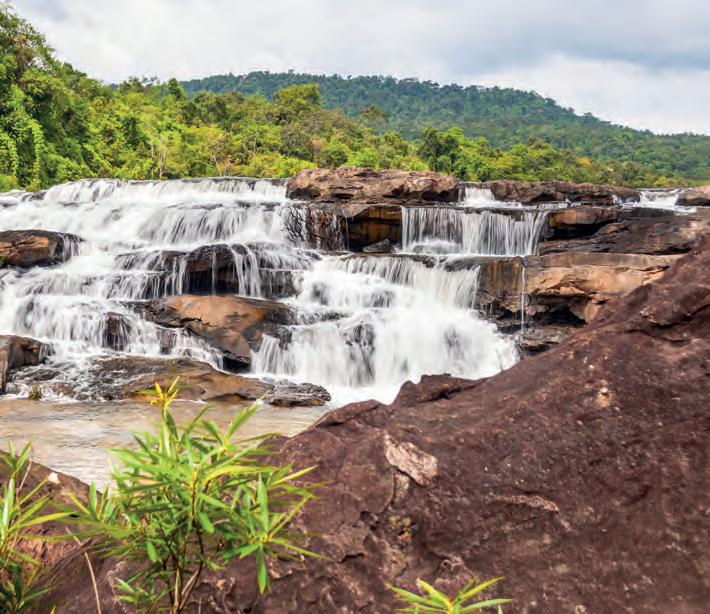
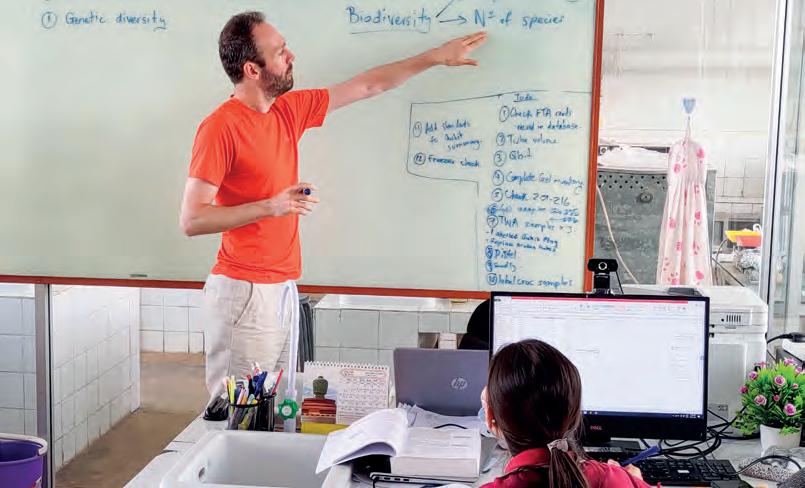
"Although there are only around 30 individuals left, they are different genetically to those elephants in the Cardamom Mountains," explains Alex. And that genetic diversity is hugely important. "Evolution acts on those differences, so those populations are more likely to adapt and thrive as they have more genetic diversity to draw on in the future."
Elephant conservation has also featured strongly in a related project focused on the growing illegal ivory trade in Cambodia. The lab's mission was to determine whether the Asian elephant population was being poached for ivory and, if so, from which protected areas.
Although it is notoriously difficult to obtain quality genetic material from ivory, the lab was able to confirm
that much of the ivory traded in the Cambodian market came from multiple populations of African elephants. It also revealed a surprise, with fragments of DNAfrom two samples matching those of mammoth samples -the first time that mammoth ivory had been identified in Cambodia.
Crocstock
More recently, the lab has played an integral role in saving another species almost lost from the wild in Cambodia. Using protocols developed at Edinburgh Zoo, lab technicians can now run a genetic test to identify critically endangered Siamese crocodiles so that individual animals can be selected for release as part of a reintroduction programme.
Revered by some indigenous communities as ancestral spirits, and also once widespread, Siamese crocodile populations have been devastated by poaching for leather and habitat loss. It is thought that only 300 to 400 Siamese crocodiles remain in the wild, with a small number holding out in part of the Cardamom Mountains, plus a few remnant populations elsewhere.
However, while the species has been all but wiped out in the wild, there are tens of thousands held in captivity in crocodile leather farms across south-east Asia, including in Cambodia. Turning a problem into a solution, Fauna and Flora International has worked with farms to source animals that can be returned to the wild as part of a long-running captive breeding for release programme.
However, there is some important genetic detective work required first. Crocodile farms keep many different species together and purposely interbreed them to 'improve· leather quality. Siamese crocodiles, one of the smaller and most docile of all crocodilians, are routinely inter-bred with Cuban and saltwater crocodiles -two of the most aggressive species of all. It's extremely hard to tell a Siamese crocodile just by sight and getting it wrong could be disastrous. "We really need to avoid putting hybridised crocodiles back into the wild," stresses Alex.
Since genetic testing of crocodile samples began, around 140 crocodiles
28 WINTER 2022 I RZSS.ORG.UK
11
0ur aim for the Cambodia lab is to have a selfsustaining facility with the expertise to tackle in-country conservation priorities for themselves 11
Dr Alex Ball
have been released as part of the reintroduction programme -a significant number given the size of the wild population. 'They have all gone downstream in the Cardamom Mountains rather than into the remnant wild population there," explains Alex.
Having such rapid genetic testing available in-country brings huge value. Previously, it was conducted in other countries which meant lengthy delays in getting results -often with the sampled crocodiles either having been used or moved on by the time the results eventually came back.
Above left: The Tatai Waterfall, Koh Kong, Cambodia is fed by water from the Cardamom Mountains

Next steps
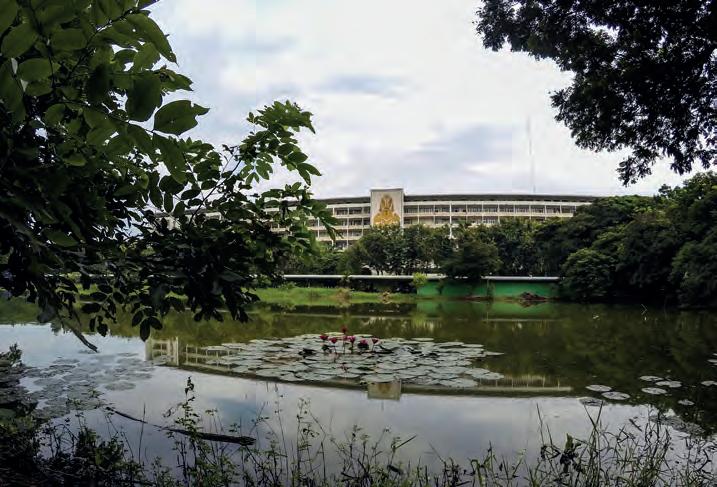
The lab at the Royal University of Phnom Penh has travelled far in a short time, although the journey has not been without its challenges. Sourcing equipment and consumables can be challenging in Cambodia and high staff turnover at the university has been an issue.

The pandemic, of course, also put a stop to what had become twice-yearly, in-person visits and training sessions at

the university. Once Covid hit, the team had to rely on filming lab technicians in Edinburgh and then sending clips to view online -far from ideal when trying to introduce complex procedures to new members of staff so far away.
And that's why the extended trip this summer has been so important. "It was the longest session we've ever done," says Alex."We met the new staff that had come in over the last two years and also managed a big refresher with the main lab members."
Overall, there is a sense that the lab is now really finding its feet, with recognition of its value to the country reflected in funding commitments from key partners -including the university itself.
Perhaps what's most exciting is that the lab can now apply its growing expertise to many other critically endangered species, with staff already being approached to work on various species of birds and primates.
With an agreement for the WildGenes team to provide training for the next two years, RZSSoversight will continue for a while yet. But for Alex and his colleagues, it's now possible to imagine a time when the Edinburgh team can step back, knowing that a country with high conservation needs has been equipped with the tools it requires to help a whole range of species, before they are lost forever.
RZSS.ORG.UK I WINTER 2022 29
AT HOME AT OUR ZOO
Edinburgh Zoo is home to a large flock of flamingos -also known as a flamboyance. The eldest flamingos have been here since the 1960s, while the youngest hatched at the zoo in 2016.
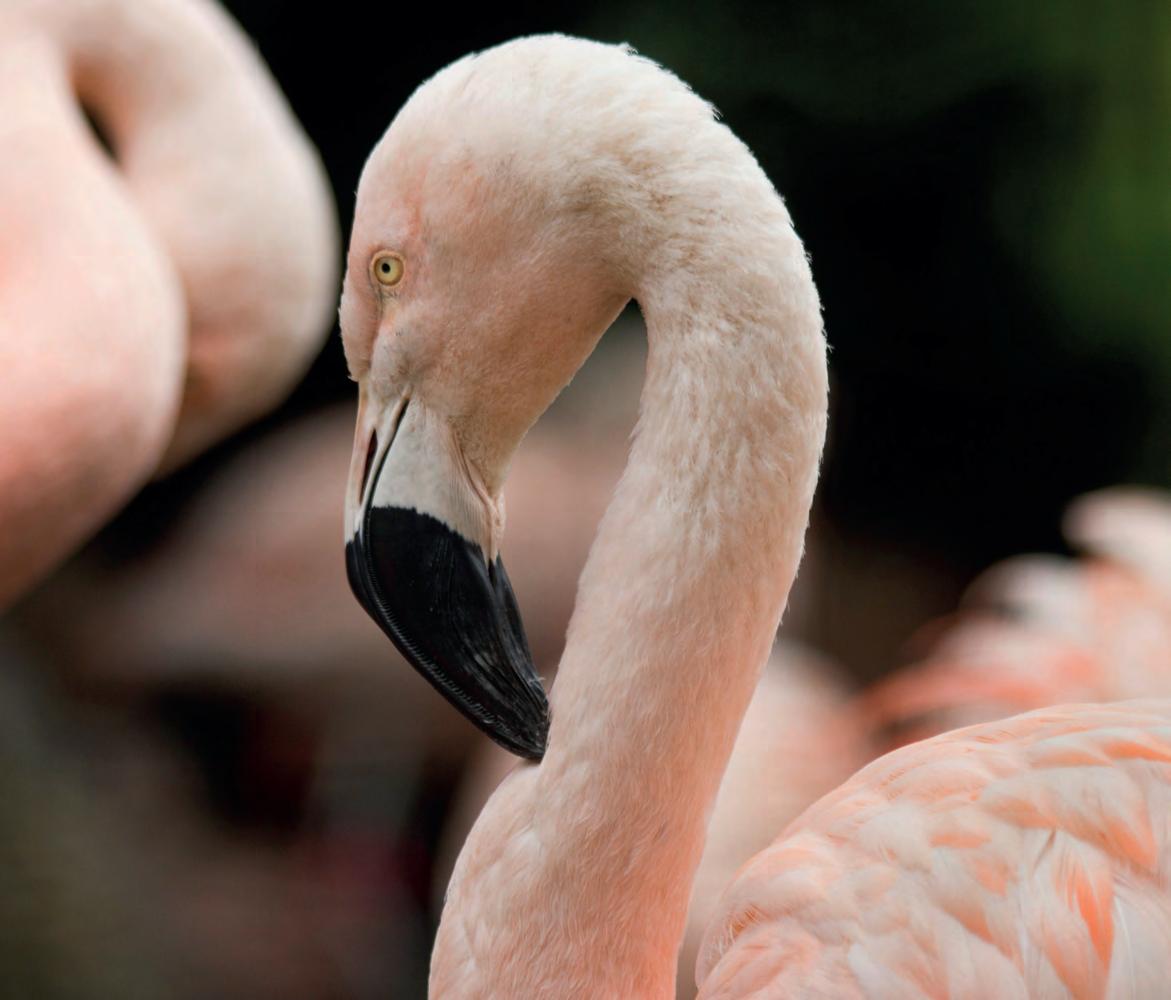
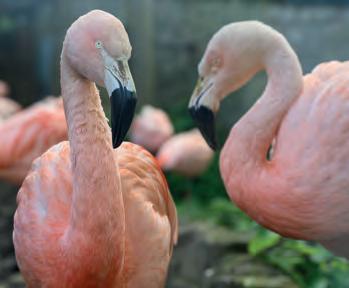

LI FELONG LOVERS

Chilean flamingos are monogamous. Ritualised displays of exaggerated preening, stretching and paired head movements are used by flamingos to attract a partner to pair with for a lifetime.
THEYAREWHATTHEYEAT
The beta-carotene in the shrimp that flamingos feast on is responsible for the bird's salmon-pink plumage. Some scientists believe a flamingo's breeding success depends on its bright colouring.
A flamboyance of these pink-plumed birds calls Edinburgh Zoo home
30 WINTER 2022 I RZSS.ORG.UK
UPSIDE DOWN DINERS
Flamingos place their heads upside down in water when feeding and use the special comb-like hairs in the top half of their bills to filter out brine shrimp and blue-green algae.

ONE-LEGGED SNOOZE
Flamingos can sleep while standing on one leg. One theory, still unproved, is that they only allow half of their brains to rest at a time while the other half is alert, looking out for predators to warn their flamboyance of any danger.
PARENTAL PARTNERS
Chilean flamingos usually lay one egg on a mud moundwhich Edinburgh Zoo keepers often start to build, to kickstart breeding behaviour. Eggs hatch after a 27 to 30-day incubation period, with both parents sharing the incubation and parental responsibilities.
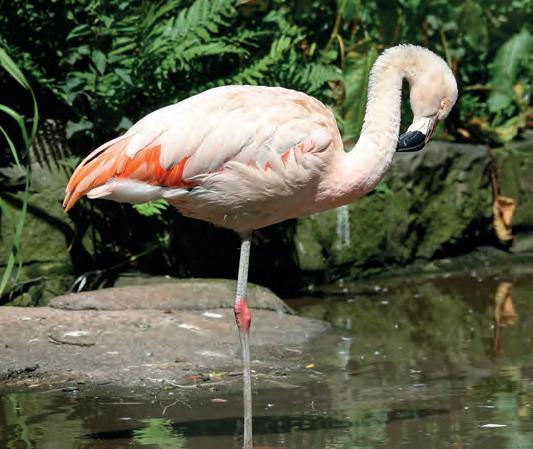
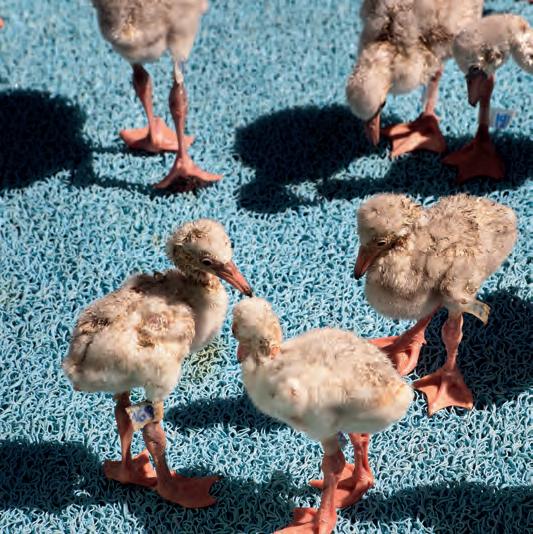

RZSS RESCUE MISSION
In 2019, the Royal Zoological Society of Scotland's veterinary and animal teams joined an international effort in South Africa to help rescue and rear roughly 2,000 lesser flamingo chicks. These youngsters had been abandoned by their parents due to drought conditions in their nesting habitat behind Kamfers Dam.
0 f0 I CL "' u 2 "' >:,: :'.'i "' w CJ <( cf.
DID YOU KNOW?
RZSS.ORG.UK I WINTER 2022 31 "' u.J CJ <( u.J S2 I u "' 0 "'
The leaves of the towering banana plant are gleaming. The nasturtium's orange blooms are scrambling across the ground, and the prayer plant's pristine foliage is velvety-soft to the touch. With everything watered and the final crumbs of soil swept away, only the judges can decide if this colourful jungle garden deserves to win gold.

Except this isn't a garden in the traditional sense, and this isn't an RHS Flower Show. The judges belong to the British and Irish Association of Zoos and Aquariums (BIAZA),and what they're assessing is the horticulture of
the new sloth enclosure at Edinburgh Zoo. Before the pair of Linne's two-toed sloths, Moana (male) and Feira (female), moved in last year, the building housed the Brilliant Birds walkthrough exhibit; now it's home not only to Mo and Fe,
but three hairy armadillos (Nymeria, Diogo and baby Wyatt) and five of their southern three-banded cousins (Rodar, Rio, Danilo, Inti and Pacha). As you'd expect, it's taken some big landscaping changes to transform the space from an aviary into a suitable home for its new South American residents.
"We always start by talking to the keepers about each species' requirements for wellbeing and enrichment, and then we plan it from there," explains senior gardener Jerry Marris. "In the new sloth enclosure, the keepers wanted a tropical feel to represent the sloths' natural habitat in the Brazilian rainforest. They requested an extensive climbing frame, but we had a free rein with the planting."
The first job was to remove and replace a layer of compacted top soil. Jerry and his colleague, gardener
Freelance journalist Aileen Scoular visited Edinburgh Zoo's sloth and armadillo exhibit for a closer look at its award-winning South American-inspired landscaping
32 WINTER 2022 I RZSS.ORG.UK
0
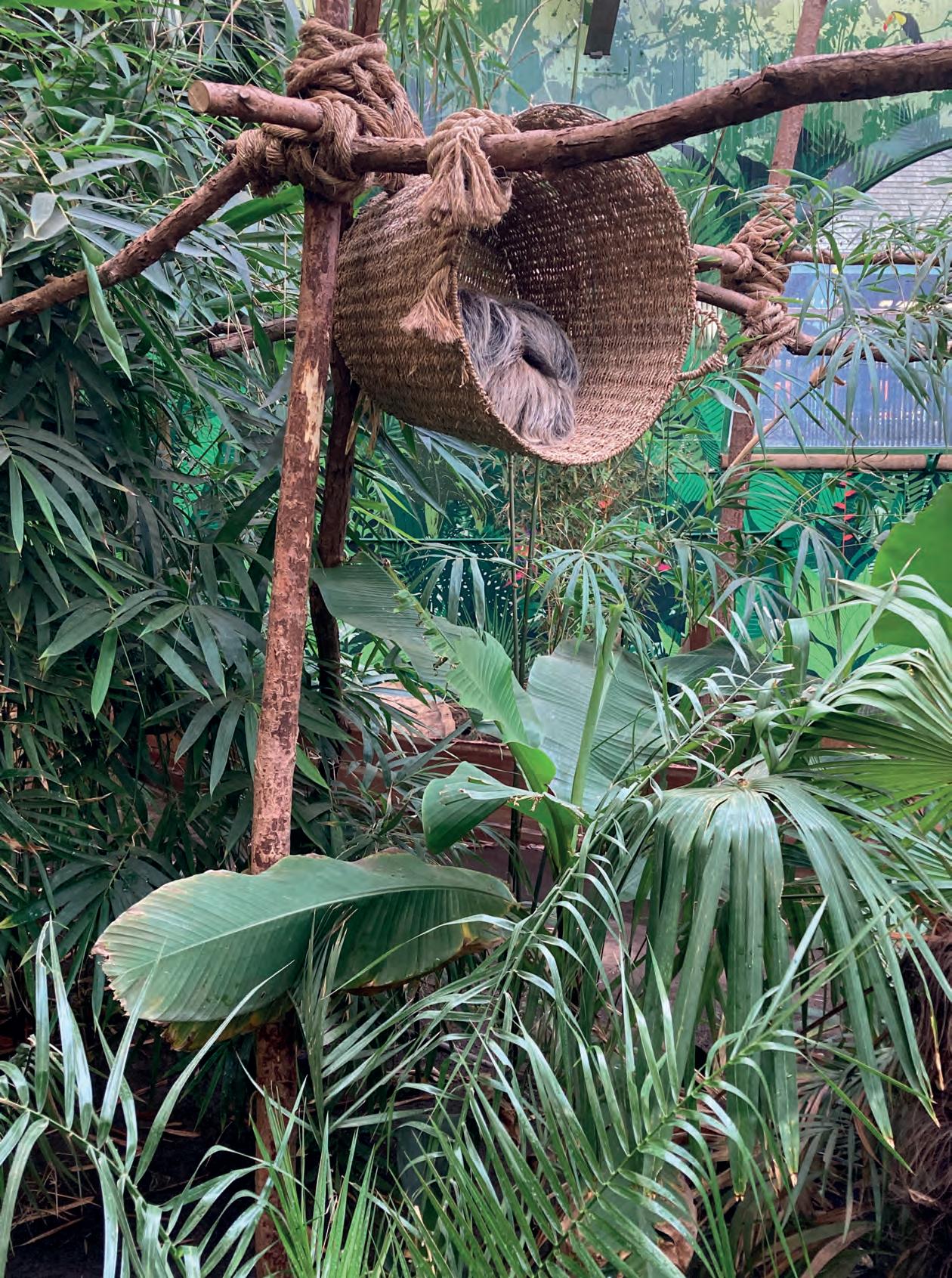

ANEW HOME
When animals move into different enclosures, our gardeners play an important role in preparing the space for new residents. Recently, gardeners Jerry and Jess have been transforming the former giant panda exhibit at Edinburgh Zoo in preparation for an anticipated temporary move by red pandas Kitty and Kevyn, who are taking a city break from Highland Wildlife Park during construction work.
·our first job was to prune the trees to increase access through the jump zones, and make them safer,· says Jerry. ·Giant pandas don't climb much, but red pandas are much more active. Then we added more branching and

TOP: At work in the old panda enclosure
RIGHT: At home and cosy!
Jess Brown, were then able to build a complex timber and rope climbing frame. After that came the plants: 280 in total, across 22 species. "The main challenge is toxicity," says Jess. "We have to work out exactly what we can and can't use, especially when we're creating a new habitat for leaf-eating herbivores. With the sloth enclosure, we had to remove lots of Ficus (fig),but we kept the banana plants, the bamboos and the Livistona, a tropical palm. And because the enclosure is heated to about 25°C we were also able to use what we'd normally recognise as houseplants, such as Calathea (prayer plant). Finally, we added climbers like passionflower and Actinidia, a member of the kiwifruit family. It was a great opportunity to choose tender species that we wouldn't normally work with outdoors."
extra planting, and built timber feeding platforms and hides:
Jess then turned to the team's on-site nursery and identified a number of suitable plants, including Mahonia, ferns, grasses, bamboos and fiery-coloured dogwoods.
·Red pandas originally come from the Himalayas, where the climate is quite temperate, so we were able to put in lots of grasses and shrubs from China and Japan,· says Jerry.
·when we had giant pandas in that enclosure, we weren't allowed to put in anything prickly because their paws are too soft. But red pandas are a much tougher species:
Plans for the old panda house may still change, with the sloths enjoying a staycation at the end of September and rumours of longer-term monkey residents with different needs.
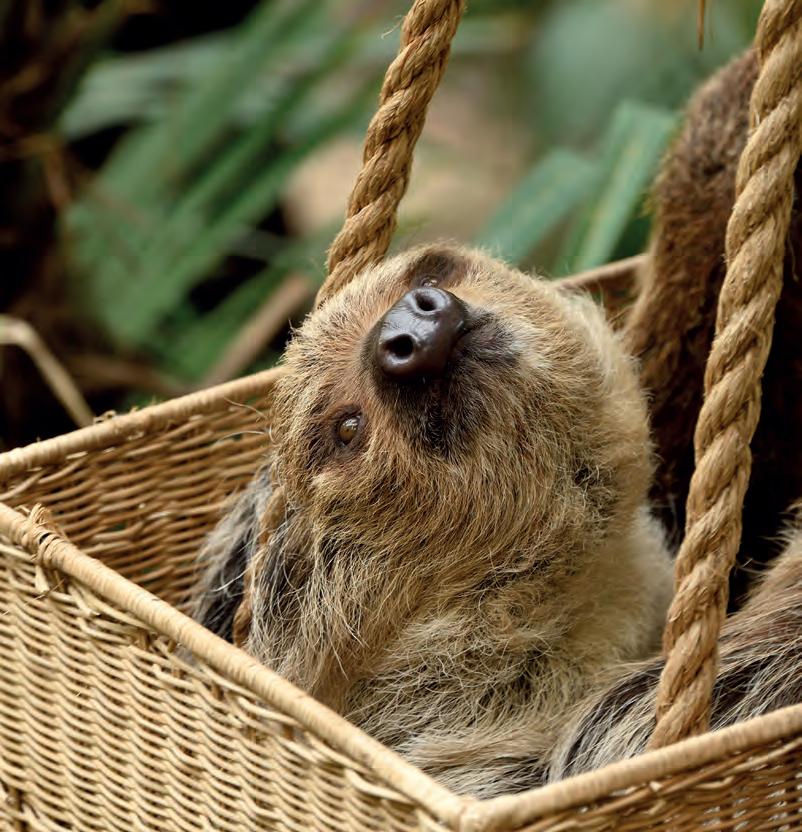
HORTICULTURE
"We try to be as experimental as we can," adds Jerry. "For the giraffes and lorikeets, for example, we used a lot of Australian plants, including acacia trees. We always try to bring in plants that don't already exist in the zoo's collection."

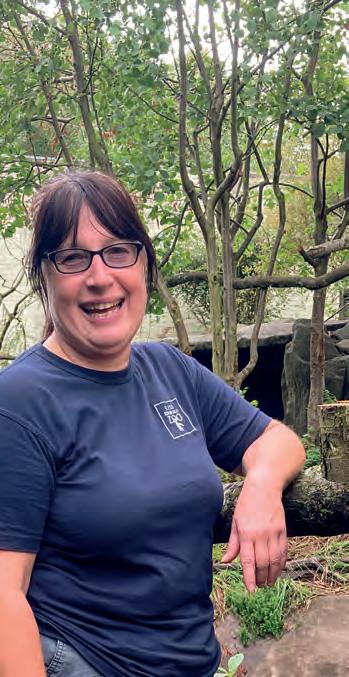
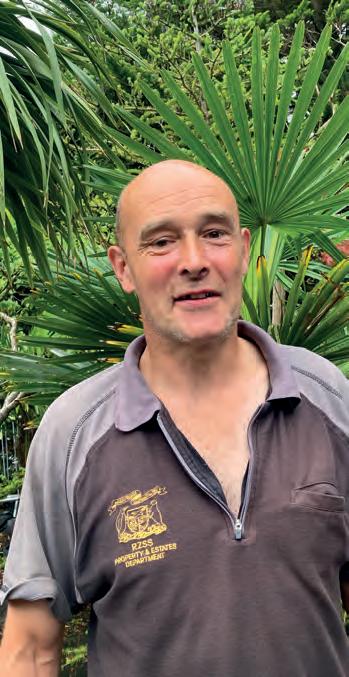


As well as identifying species that are safe, stimulating and enriching, the team planted in layers, adding depth and height to the foliage (and giving the sloths the option of privacy
away from visitors, if they want it). But visitors are also a consideration; every exhibit is an opportunity to help people learn about the animals and creating realistic representations of their natural habitats is key to that.
Getting each habitat just right means some plants, inevitably, have to be
brought in from outside the UK but the gardening team keep a keen eye on sustainability. When plants are ordered in, several are put to one side for propagation -the team of 14 regularly propagate their own plants in the three glasshouses and polytunnel -and as future replacements, to help reduce delivery miles. Nothing is ever wasted: leaves become compost and leaf mould, and even dead trees are put to use -as in the sloth's climbing frame, built using timber left over from willow browse.
It all gets used

"Afallen tree is like a goldmine here," laughs Jerry. "Assoon as a tree comes down, the limbs and branchings are used for climbing frames, the stumps become feeding platforms, and nontoxic foliage can be used to feed the animals. Even the trunk is useful -we cut it up into logs which will then rot down, and can be given to the anteaters and the sun bears. Everything gets used to benefit the animals in some way."
As for the sloths, they made themselves at home from day one. "Mo and Fe immediately ate a lot of
ABOVE:Senior gardener Jerry Marris; propagating Calathea; gardener Jess Brown BELOW:Inside the enclosure
RZSS.ORG.UK I WINTER 2022 35
what we'd planted! They both seem to like the taste of expensive tree fems -as soon as a frond unfurls, it disappears," says Jerry. "They come out onto the climbing frame a lot. too, rather than hiding awayespecially Fe."
Both Jerry and Jess love the moment when the animals interact with their work for the first time.
"Iremember when we planted up an enclosure for the drills -a primate similar to a baboon," says Jerry. "It looked absolutely fantastic. But then the drillscame in and just destroyed everything! It was fun to watch because they just looked so happy."

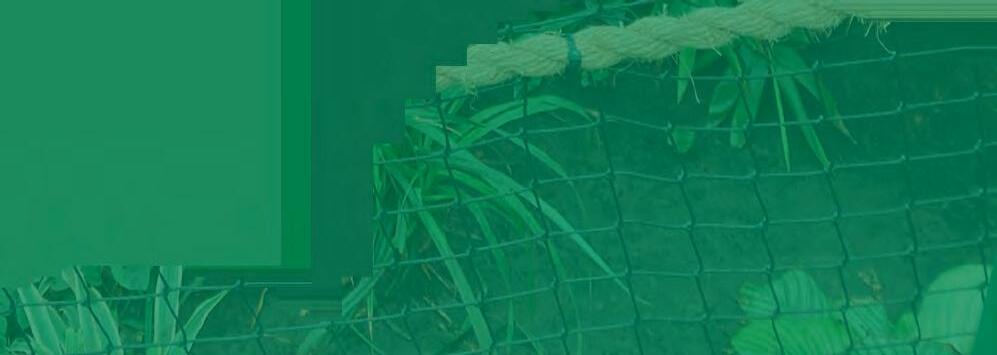
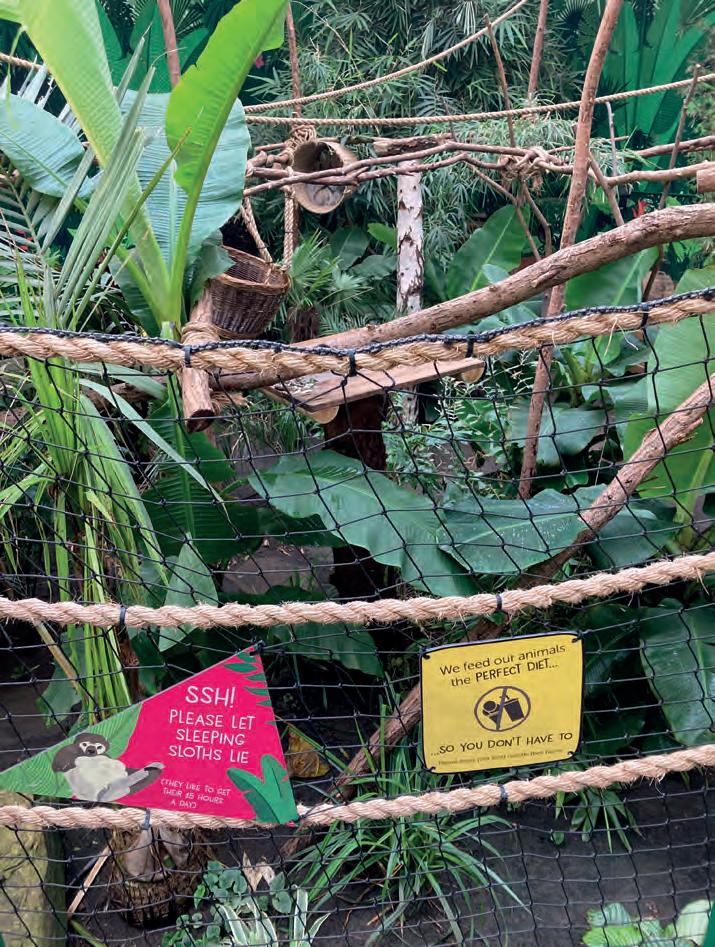
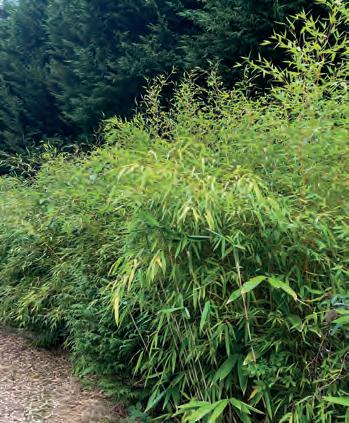

Jess agrees: "When you work on a big project, such as the sloth enclosure, it's really exciting to be there when the animals arrive.You know the enclosure will never look as neat again, but creating healthy habitats, that enrich the animals' lives,is the whole point of our job."
Gold standard
It's not just the sloths who approve. When the BIAZAAnnual Awards were announced, the exhibit won gold in the Horticulture category -one of eight wins for RZSSthis year (see page 37). It's a fantastic commendation of the team's hard work, and evidence they've firmly accomplished what they set out to do in terms of not only animal welfare and enrichment but also visitor experience.
There are always improvements to be made, and Jerry and Jess have since
extended the climbing frame to give Mo and Fe even more personal space, and added more plants. Elsewhere they've refurbished a former giant panda enclosure (see page 34) -and next on the agenda is a revamp of the tegu's area in the pygmy hippo house. "We're going to add a water feature and replant the whole area," says Jerry. "Asalways, we'll be looking for a happy balance of what the animals need, what the keepers want, and what the public expects to see."
"Zoo horticulture is definitely in a category of its own," adds Jess. 'Tve patted a rhino, fed the lion clubs and held an armadillo. Who wouldn't want to do that every day?"
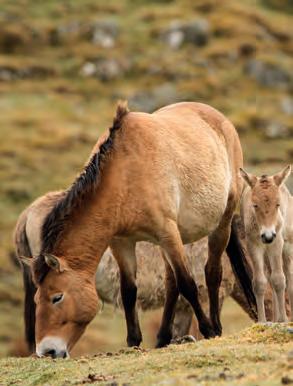

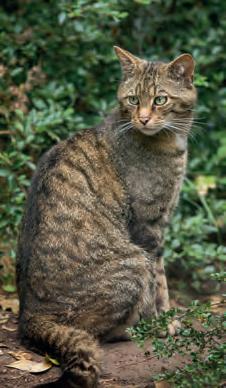

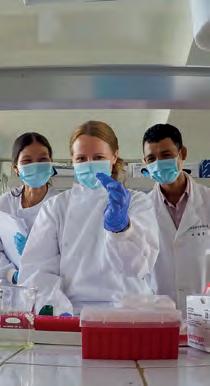

RZSS.ORG.UK I WINTER 2022 37
How did you get your first job at the zoo?

When I was 16 I got an opportunity to come here for an interview. I was planning to stay on at school, but my mum said: 'Just go along and see what it's like. You don't have to take it.'
I turned up at the gate -another man was sitting there -and said: 'I've got an appointment.' They gave me directions, and I came into the zoo and walked around for about two hours, but I couldn't find the office.




Now, when I was 16 I was really shy and I was too embarrassed to go and ask. So I walked back down the hill and was about to leave, but as I was walking past the sea lion enclosure I bumped into the man
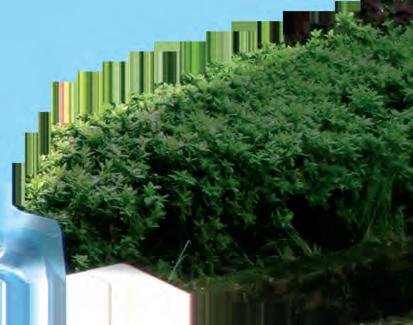
from the gate, and he asked me how the interview went.
I told him I'd never found the office and so he walked me all the way back up there, and took me in. I did the interview, and after I came away they phoned my mum and said I'd got it.
That man who helped me was John. He was a plumber's mate here, and I worked with him for about 20 years. I always said to him, if it wasn't for you, I wouldn't be in this job.
You started in 1986. What was the zoo like back then?

It was much smaller -not the zoo itself but the staff. The animal department was the largest, followed by the catering
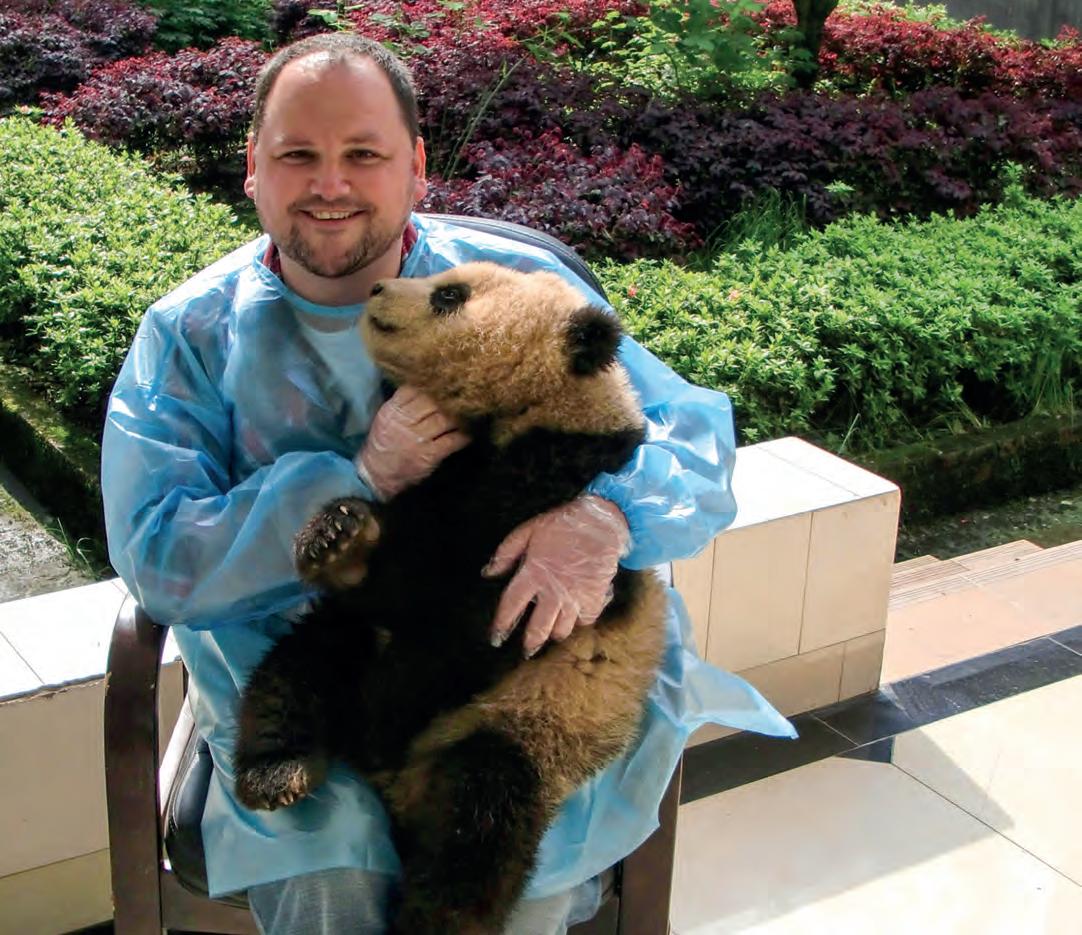
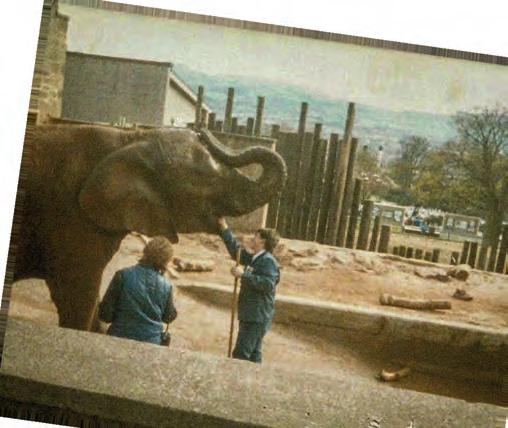

department, the works department and gardens. We had an education centre and department -that was very groundbreaking in those days. There were two gate attendants and just two ladies in the gift shop.
It felt like a family -the keepers socialised a lot, we went to parties and to the cinema -and I grew up with this group of people who gave me values and inspired me. I've always found it a comfortable space. I'm an LGBT person, and in the 1980s you did used to get picked on. I never experienced any of that in the zoo. I think because we have this bond of all working together for a common purpose -the conservation of animals and educating people about animals -we're very close, and we've always protected each other.
What zookeeping achievement are you proud of?
We'd been breeding pygmy hippos very successfully, and then -I think it was on
38 WINTER 2022 I RZSS.ORG.UK
our seventh pregnancy - th\e murm had mastitis and couldn't look after her new female baby, so myself an keeper Karen Stiven hand-reared her. is was only the second pygmy hippo that had been hand-raised in the Euro, ean population, probably the world - it just wasn't done. They're incredibly elifficult to hand-raise.
We introdu ea the youngster back to her parents, which was very successful, and later she moved to Toronto Zoo. Wnen she had her own baby I went to see her. I asked the keepers if I could go in beside them, and they said, 'Oh no, she's far too dangerous.' I understood that. But I called to her -she was lying beside her baby -and she put her head up and looked over. She recognised my voice. And then she lay back down and I thought, well, I'm happy with that. She's here, she's got her baby, her family line's continuing. And that's something that I've done to help that species.
Whatchangeshaveyouseen at RZSSover the years?

We've changed the way we look after animals. That's in all zoos, across the board. We've built new exhibits with the best practice we can, and we've gradually removed some of the exhibits that were acceptable in the 1970s and 80s that are not so acceptable today.

Before, there was lots of manual handling, but now we use positive reinforcement training. If you want an animal to go into a box, say, and it goes into the box, you give it a piece of food -and over a period of time it learns that behaviour is rewarded. Now when the keepers go down to the chimp house the chimps all come in and present a shoulder to the bar, so we can give them an injection or take a blood test.
Separately, we've become a much more diverse organisation. I think that's the same the world over. I'd like to think I've been part of that change -I've really


actively promoted equality, sexual equality particularly, and I've always felt RZSShas been very good at that.
Public attitudes to conservation have changed a lot since you started out. Do zoos now mean something different to people?
When I started, people were coming as a day out, just to look at animals. The big change now is they want to engage with them as well. They want to have experiences like animal encounters. They want to learn more. I think the younger generation have a desire to learn a lot more and to be much more hands-on.
What has been your most memorable experience?

I went to China to go and see the giant pandas, Yang Guang and Tian Tian, before they came to the zoo. I started by going there a couple of times a year, and then in 20111 went over to see the pandas shipped out of Chengdu Panda Base and moved over to Edinburgh.
We had a big leaving ceremony, lots of dance and music, and then we travelled to Chengdu and boarded a FedExcargo plane. There were the two panda boxes in the back, and then four seats -myself and a colleague from Edinburgh, a vet from China, and a local controller from FedExand the pilots. That was it.
We made sure the pandas had bamboo, made sure they were happy. When we came into Edinburgh the plane circled the airport and you could see hundreds of
people around the perimeter. As we came off the plane we met with deputy first minister Nicola Sturgeon -Alex Salmond was actually in China at the time -and the Scottish secretary for the UK government and officials from Edinburgh, and there was a cortege of vehicles that drove from the airport to the zoo. There were kids lining the streets with Chinese flags -it was an amazing thing.
That must have been an incredible experience! That's probably the highlight of my career, yeah. I remember sitting on that aeroplane thinking back to when I was a kid, ten years old, being a member of the WWF with the panda logo and thinking, oh, it's amazing to look after animalsand twenty-odd years later I'm flying two giant pandas into Edinburgh for everyone to greet.
11We 1ve changed the way we look after animals1 but we 1ve also become a much more diverse organisation 1 '

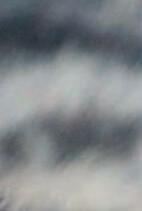





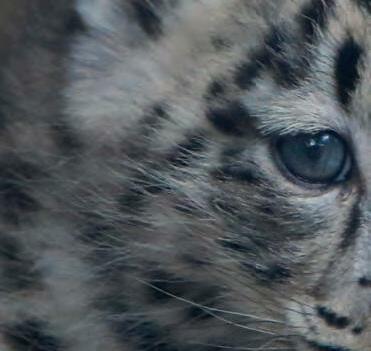


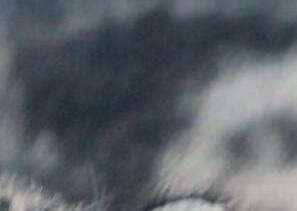


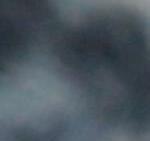





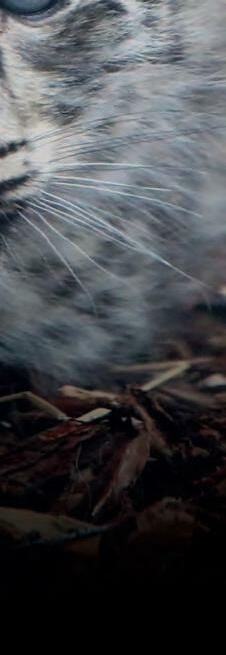


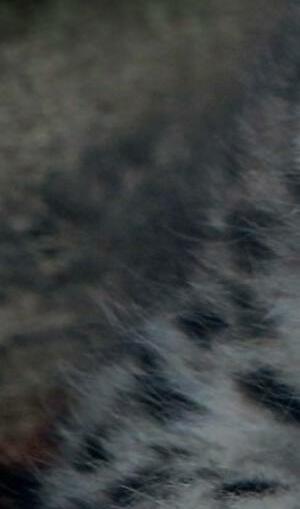

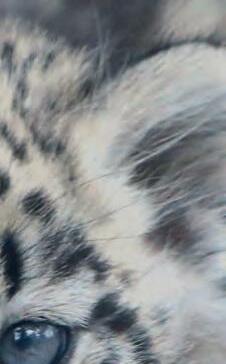



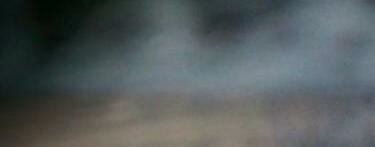










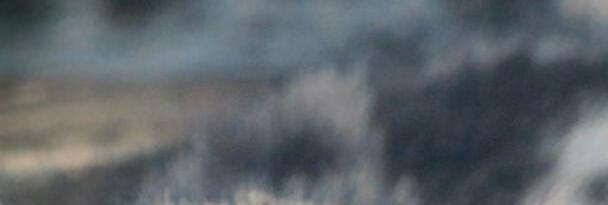


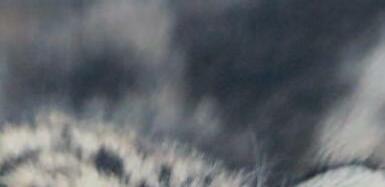
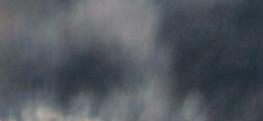









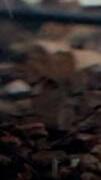




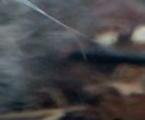

UIDE


Events • Gifts • Membership SPOO\(TACULARI
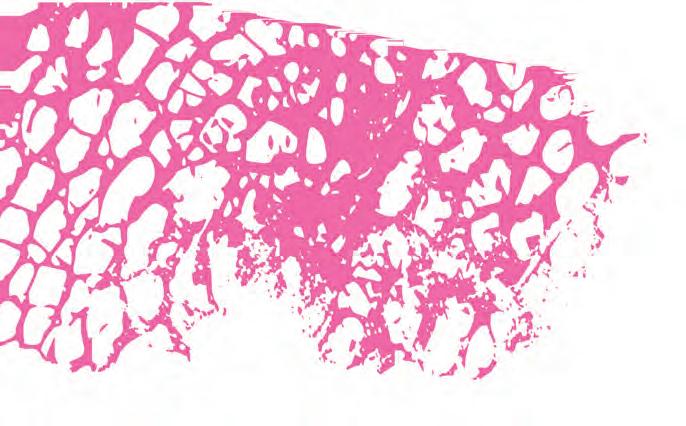
Listen out for rustling among the trees and watch out for peeping eyes at our family-friendly fright nights held in Edinburgh Zoo.
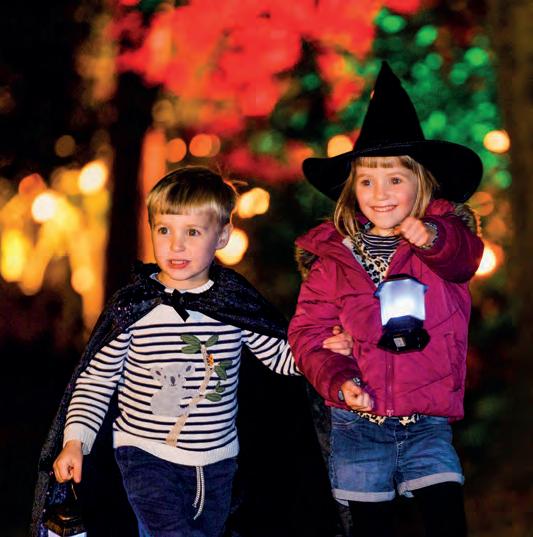

Friday 7 to Monday 31 October
Sponsor one of the wildcats in the Saving Wildcats project this Christmas and help save this iconic species from extinction in Scotland. Find out more on page 49.
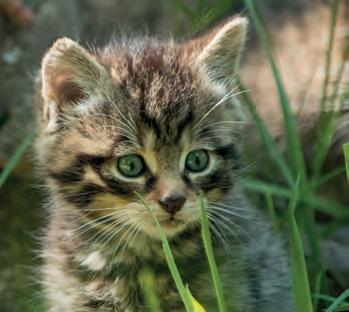
EVENTS RZSS.ORG.UK I WINTER 2022 41
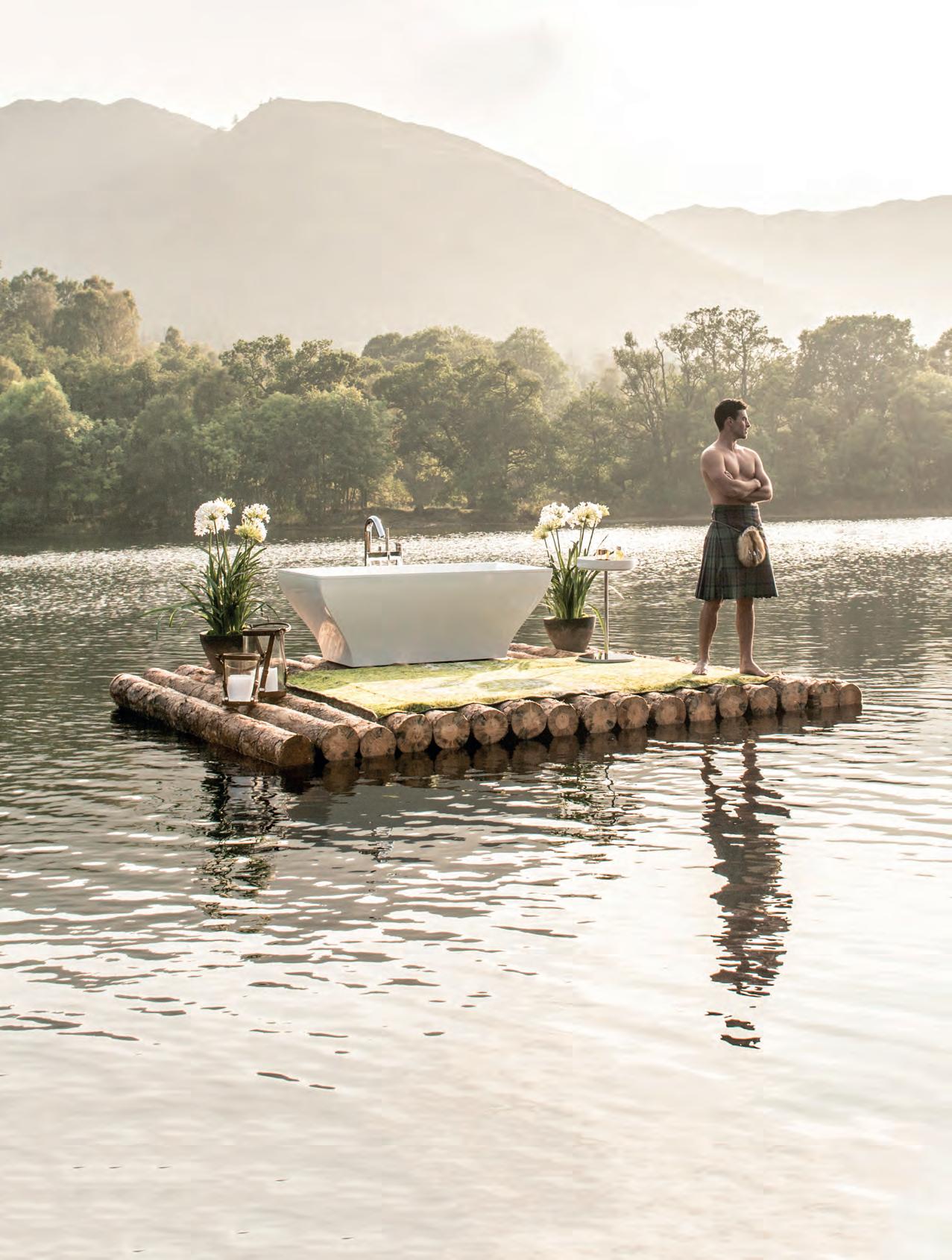


The Bathroom Company
Edinburgh Zoo tAJl•Affiffl

This Halloween, Edinburgh Zoo Spooktacular! returns with a new series of family-friendly frights. We SCAREyou to come and brave the illuminated trail and meet some weird and wonderful characters along the way!




From pirates and dragons to skeletons and ghosts, there's plenty to get you into the Halloween spirit, as well as themed food and drink kiosks throughout.


edinburghzoo.org.uk/halloween
CI-IRISTMASAT EDINBURGI-Izoo
2-24 December
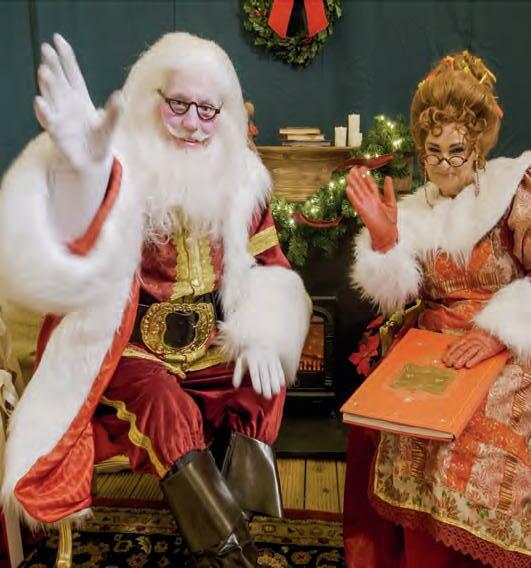
Come and meet Santa and Mrs Claus at Edinburgh Zoo's Christmas grotto. Bookings will be available for 10-minute slots from 11.20am-3.30pm and the grotto will also open for special breakfast and evening events. Admission tickets can be purchased on the door, or in advance through our website where you'll also find details of other festive experiences at the zoo.
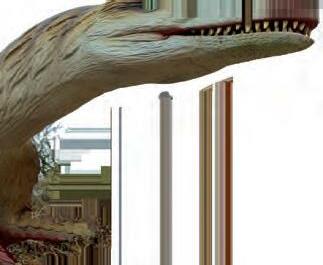
edinburghzoo.org.uk/events

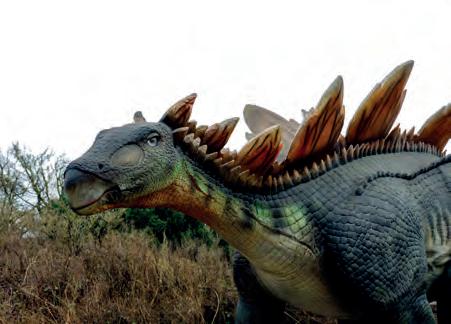

DINOSAURS~
Have you discovered the dinosaur trail at Edinburgh Zoo yet? More than 20 animatronic dinosaurs have made their home at the hilltop, including a 12m-long t-rex and a 20m-tall brachiosaurus.
Dinosaurs! at Edinburgh Zoo is included with your normal zoo entry.
Come and hear our discovery rangers share behind-the-scenes insights into the animals in our care. Check the displays when you arrive at Edinburgh Zoo or Highland Wildlife Park for more information or speak to the friendly staff on our reception desks.
EVENTS
0ur Giraffe About Town event took Edinburgh by storm in July and August. 42 tall giraffes led a trail highlighting some of the wonderful sights of the city, and 32 wee giraffes, decorated by schools and community groups, formed a 'wee trail' in libraries and city centre business windows.

RZSShead of marketing and sales Lisa Robshaw said: "It has been wonderful to see everyone enjoying Giraffe About Town this summer, with over 5,728 people downloading the app. The trail has encouraged locals and tourists alike to fall in love with Edinburgh by exploring iconic locations and hidden gems across the city, logging over 27 million steps, all the while helping to protect animals in Scotland and around the world."
In September, we held an amazing farewell weekend at Edinburgh Zoo. All the giraffes, both wee and tall, went on show together before they were auctioned to raise funds to support our conservation projects in Scotland and across the world.
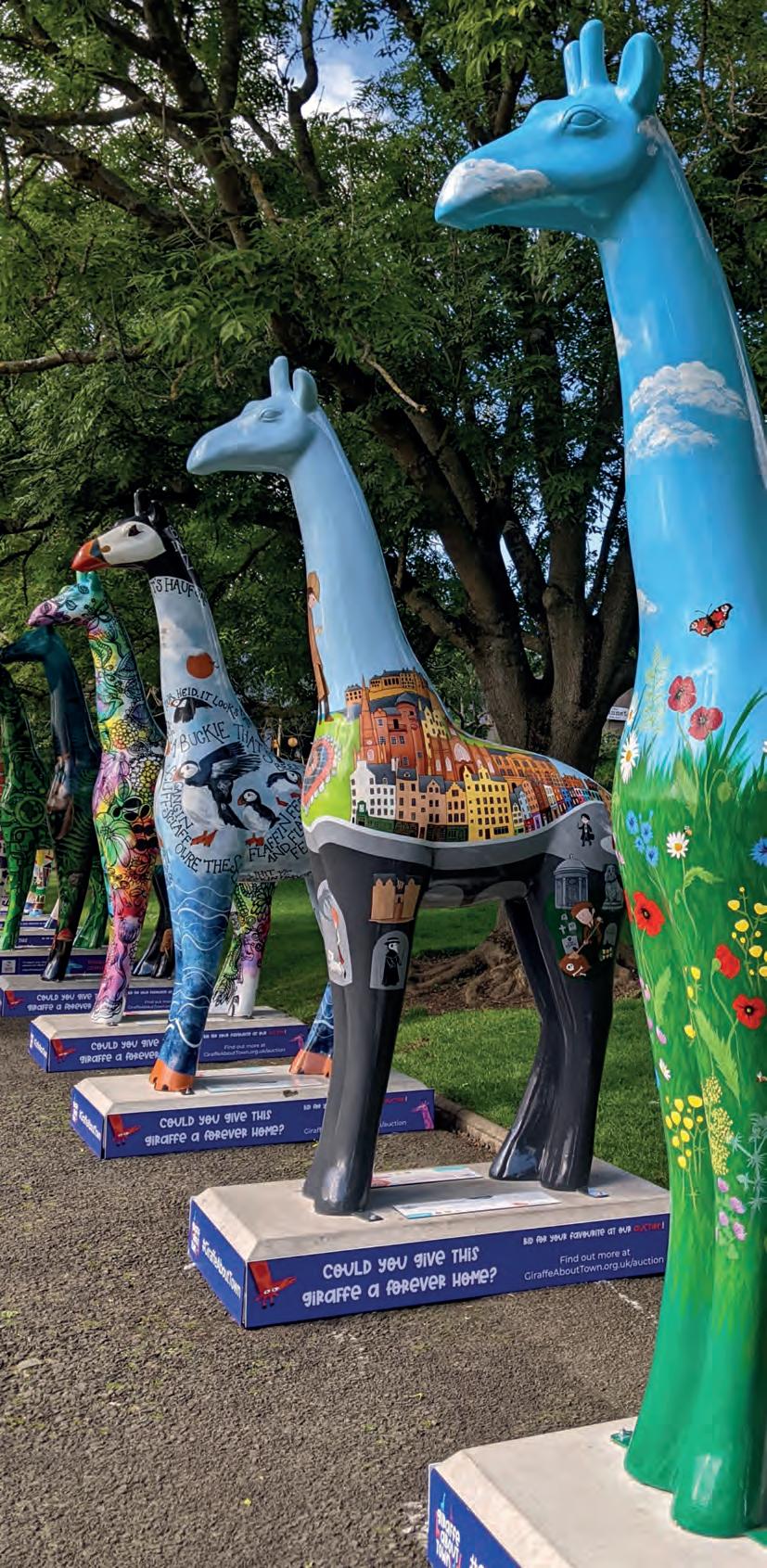




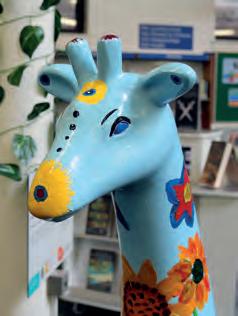
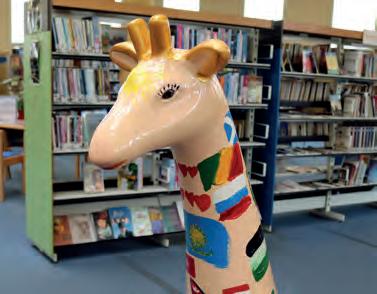
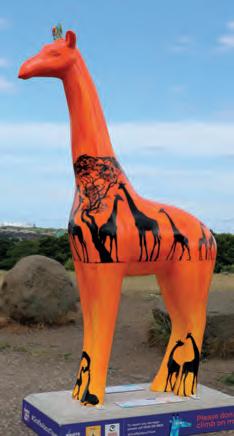
• EVENTS TOW
IN OUR SHOPS ,PP
Christmas isn't far away, and there are lots of lovely presents to choose from in our shops at Edinburgh Zoo, Highland Wildlife ark and online at shop.rzss.org.uk
f) These hand-painted baubles (£15) have been designed by Emma Ball exclusively for Edinburgh Zoo. Whether you opt for a family of festive penguins or giraffes in scarfs and party hats (or both!), they're the perfect way to show your love for the Zoo this Christmas.

E@
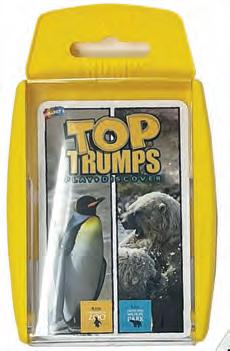
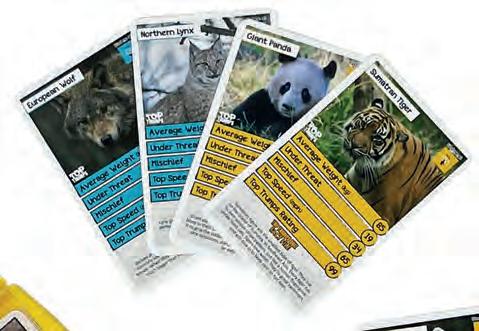
0 This special edition of Top Trumps (£8.99) features 30 animals from Edinburgh Zoo and Highland Wildlife Park. See how they compare across categories including weight, top speed and 'mischief' -and if you buy on line, you'll get an additional Super Top Trumps card exclusive to RZSS.Also check out p11 for our exclusive new Edinburgh Zoo Monopoly game!
E G
0 Keep track of your 2023 and support our global conservation work at the same time with this vibrant wall calendar (£7.50). Each month features a different animal picture and related conservation facts, and the A4 format means there's plenty of space for your important dates.

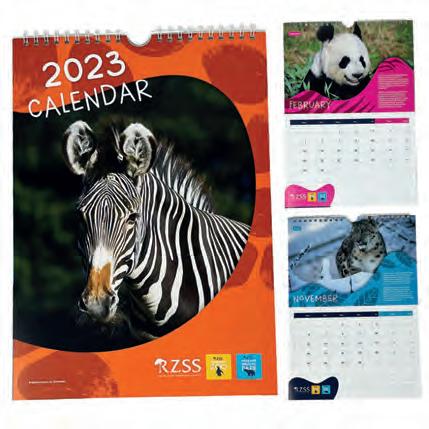
E G
RZSS members are entitled to 10% off in our gift shops just show your membership card at the payment desk! Or use the code MEMBER10 to claim your discount at shop.rzss.org.uk
0 The perfect shape for a G&T, this hand-crafted 'Let it snow' balloon glass (£25) makes a wonderfully festive gift for the gin appreciator in your life. (No-one said that can't be you!) G
AVAILABILITY
E Edinburgh Zoo shop
Highland Wildlife Park shop
G Online shop
Every purchase helps to care for our animals and supports conservation and community projects in Scotland and around the world
46 WINTER 2022 I RZSS.ORG.UK
:ECO
WARRfOR

 OEEPIYNOURISHING SHAMPOO BAR
OEEPIYNOURISHING SHAMPOO BAR
To BEGREEN


0 In an effort to reduce our plastic waste, more and more of us are turning to shampoo bars -and this one from Eco Warrior (£6) is a particular treat. Free from detergents and sulphates, it's made with pink clay to condition, clean and moisturise, and fragranced with orange and ginger essential oils.

E@)

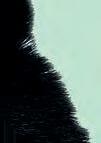
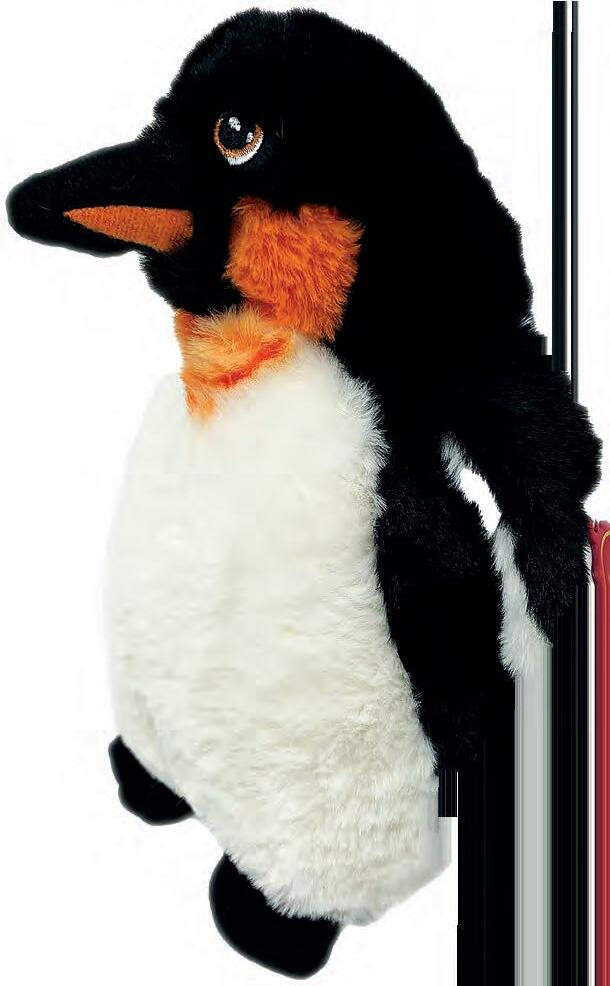
0 This sweet little penguin (£15) is made entirely from recycled materials, but that doesn't mean it's any less cuddly! It's 25cm tall and is weighted to stand perfectly on its felt feet.

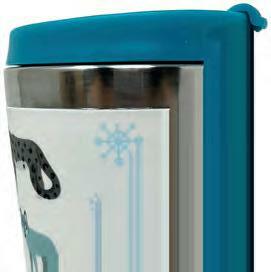
E@)

a playroom classic, and with good reason. Handcrafted from sustainable rubber wood and painted with eco paints, they're brilliant for open-ended, imaginative play. This bag of six (£20) includes an elephant, lion, gorilla, meerkat, crocodile and giraffe, ready to be stacked, sorted, made into nature scenes and treasured. E @)

0 This stainless steel travel mug from Highland Wildlife Park (£13) is perfect for icy winter days. It's double-walled to keep your drink at the ideal temperature, with a screw lid and flip-to-drink opening, and features images of some of our most-loved animals, including polar bears, snow leopards and wolves. G!
0 These clever kits use simple numerical sequences to guide children through making their very own 3D models, using nothing but pre-cut recycled card and non-toxic glue. There are five different animals to choose from, including pandas, penguins and zebras (£12.50 each)but be warned, once you start you'll want to get 'em all. G!
0 Individually or as a set, this lovely coin purse (£17) and wash bag (£30) from Amy Britton make wonderful presents. Handmade from worldfamous Harris tweed, both come fully lined with a zip closure. G!
'TISTHESEASON ...
At RZSS we're committed to reducing our environmental impact, and we know many of our members feel the same. Here's our pick of sustainable and fabulous Christmas gifts ...
p9 ____.-/
'!lzss HIGHLAND WILDLIFE
0 Fairtrade company Lanka Kade's animal figurines have become
RZSS.ORG.UK I WINTER 2022 47
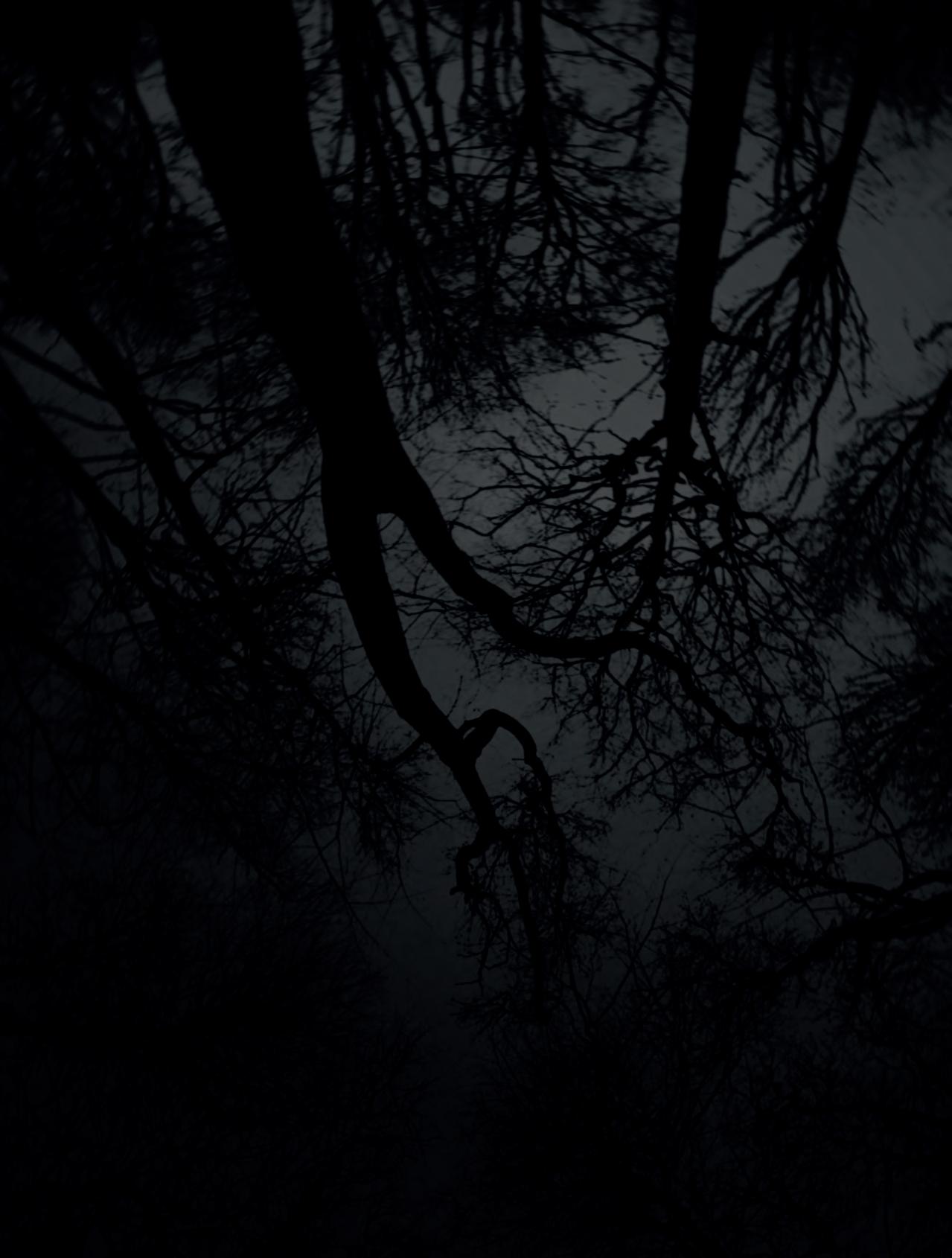

ADOPT AN ANIMAL
You can adopt a loved one's favourite species on their behalf, which in turn helps to care for the animals. Our charity's food bill alone is more than £60,000 every month. Your support will also help to save animals in the wild by funding our many conservation projects here in Scotland and around the world. You will receive a confirmation email with details of your adoption and a gift certificate you can fill in at home. adoption.edinburghzoo.org.uk
BUY A GIFT MEMBERSHIP

Loving your RZSSmembership? Why not treat someone else so they can come with you next year? As a member they'll enjoy unlimited visits to Edinburgh Zoo and Highland Wildlife Park, as well as 12 other zoos across the UK and Europe. At just £63.50 for adults and £31.50 for children, RZSSmembership is great value! Order by Monday 5 December and receive the membership pack in time for Christmas. rzss.org.uk/membership
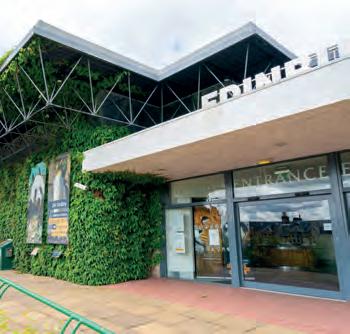
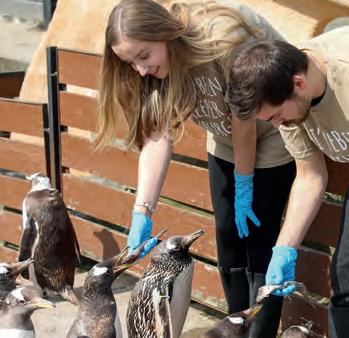
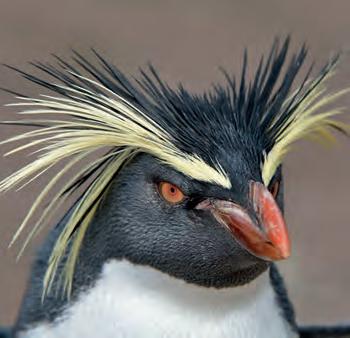
SPONSOR A WILDCAT
Sponsor a wildcat through the Saving Wildcats partnership and help secure this incredible animal's future in Scotland. You can choose to sponsor one of three cats in the conservation breeding for release centre at Highland Wildlife Park: Drama, Cranachan or Fruin. This year, they've started their own families and we hope their kittens will be the first generation to be released into the wild in Britain. savingwildcats.org.uk
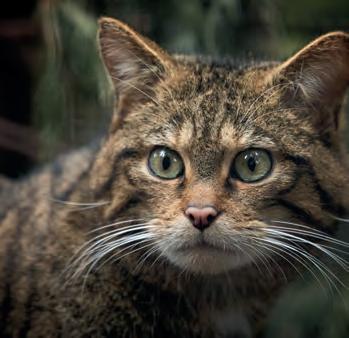
BOOK A KEEPER EXPERIENCE
Our fantastic range of keeper experiences and Magic Moments will give you a once in a lifetime chance to get up close and personal with our animals. Options include full and half-day keeper experiences, as well as junior and mini experiences for youngsters. Or enjoy a special Magic Moment with one of your favourite animals at Edinburgh Zoo, including rhinos, meerkats and giraffes. shop.rzss.org.uk/collections/keeperexperience-vouchers
RZSS.ORG.UK I WINTER 2022 49
Above: Cabbage leaves are on the menu at feeding time
Below:

Lizzie gets to boop a rhino snoot!
I've passed Edinburgh Zoo's greater onehorned rhinos, Qabid and Sanjay, on my commute to my office for nearly five years now. Their heated indoor pool is located on the other side of the wall, so I'm used to smelling them whenever they're splashing around. It's been a delight having Qabid and Sanjay be part of my working day for so long, but it wasn't until a chance opportunity two years ago that I established a close connection with them.
In October 2019 I received an email from the keeper experiences team asking if anyone was available to take part in feeding the rhino that day. A new member of the team was getting trained on how to feed Qabid and Sanjay and they were keen for other Edinburgh Zoo staff to get involved too. I immediately put myself forward and was lucky enough to be picked.
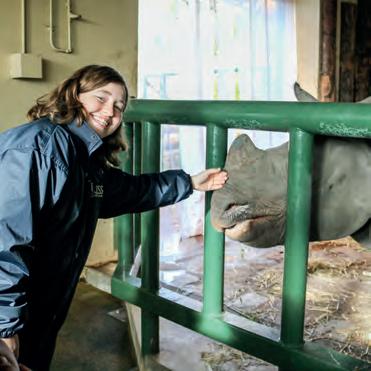

As soon as I reached the rhino enclosure, I stuck my wellies on and was handed a bucket of branches and leaves before being instructed on how to feed them.
Rhinos have amazing prehensile top lips, which they use to bring the trees and shrubs they feast on to their mouths.
Sanjay was the first to come over for a browse and he was happy to get stuck in. It took longer to grab Qabid's attention -he preferred lying under the heat lamps while nosying at us. It wasn't until we got some cabbage leaves out that he finally came over to fill up on one of his favourite snacks. It was so lovely to give the rhinos a cheeky stroke on their noses while they munched away.
Getting to feed Qabid and Sanjay was just an incredible experience. They're great friends, so seeing them interact with one another was so special and made me much closer to them.
I managed to get a sneaky second feed just after lockdown when we were filming one of the rhino keepers. Once filming was complete, they handed me the leftover food and told me to go for it. It was a real treat to get up close to these incredible animals again.
Making my way to the office each morning always reinforces how lucky I am to work at Edinburgh Zoo. However, like all of us, I've sometimes been guilty of being so focused on a busy day ahead that I haven't fully taken stock of just how incredible it is to work next door to Qabid and Sanjay. Nowadays I make sure to stop and say hello every time.
Not everyone can count rhinos among their work friends, but I'm lucky enough to say I do. Every time the wind changes and our office is filled with their scent, I fondly remember giving their snoots a boop!
SO WINTER 2022 I RZSS.ORG.UK
11Making my way to the office each morning alwaysreinforceshow lucky I am to work at EdinburghZoo'' Learning technology officer Lizzie Seymour
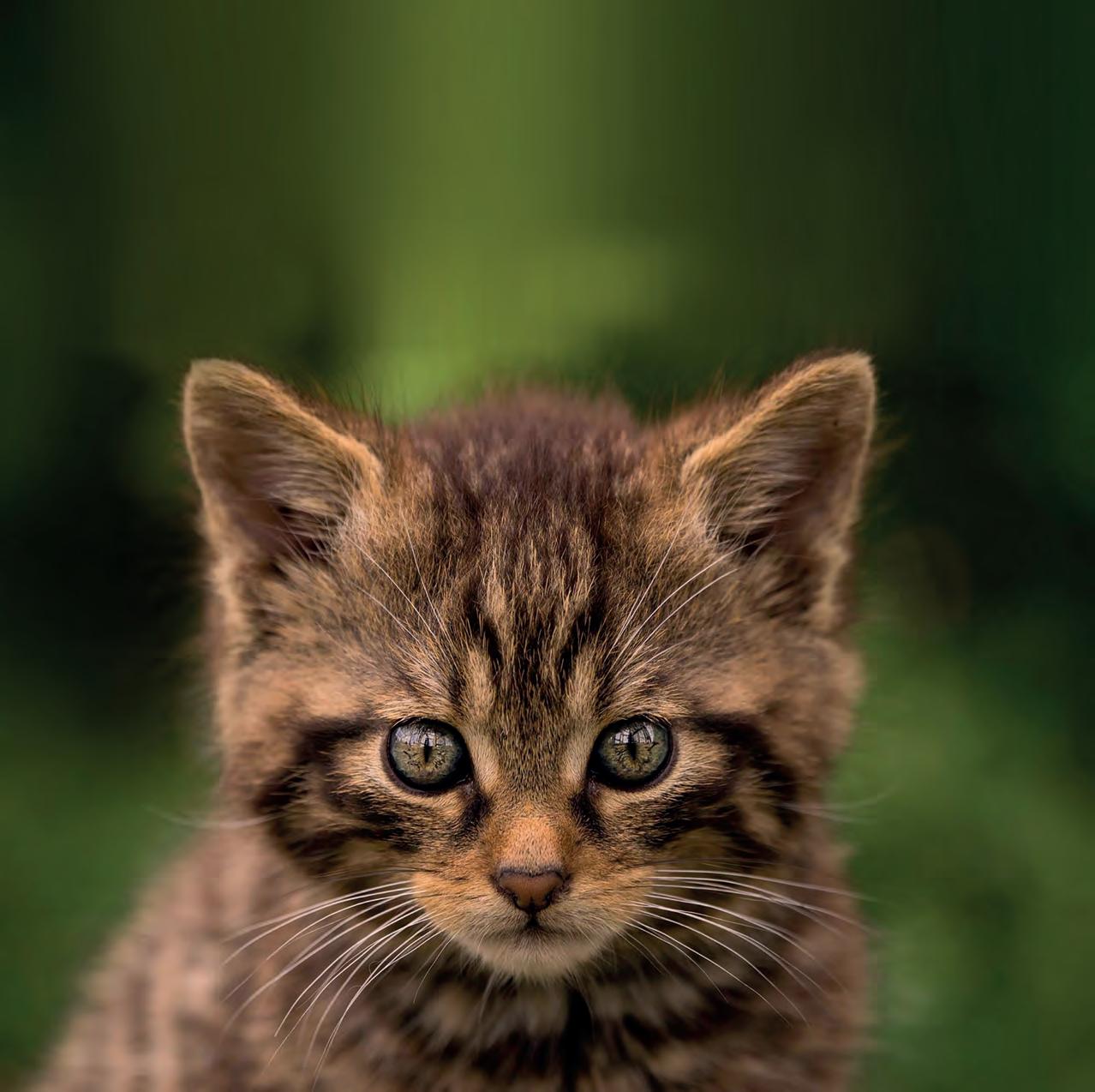






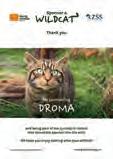





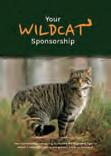































































































































































 Toe Hebridean Baker is Coinneach Macleod, born and raised on the Isle of Lewis.
Toe Hebridean Baker is Coinneach Macleod, born and raised on the Isle of Lewis.


























































































































































 OEEPIYNOURISHING SHAMPOO BAR
OEEPIYNOURISHING SHAMPOO BAR





































